

5 Best Marine AC Units (For A Cool Boating Experience)

Josh Mitchell
Expert Reviewed By
Last Updated On
April 15, 2024
“If you make a purchase using our provided links, we may receive a commission. Learn more here.
A hot day on the water doesn't have to mean sweating to death. The best marine air conditioners can keep the inside of a boat ice cold even on those 100-degree days.
I know that a marine air conditioner can be an expensive investment that should not be taken lightly.
That's why I made this list of the best marine AC units to help boaters find the best way to stay cool in those hot summer months.
Quick Glance - My Recommendations
Dometic Brisk II B57915.XX1C0
Editor's choice.
Webasto AC Retrofit Kit
Best Replacement Marine AC

Dometic Emerald Titanium DEUX
Best High-End
5 best marine air conditioners for a cool day of boating, 1. dometic brisk ii b57915.xx1c0.
Best Rooftop AC
Overall Score
Energy Efficiency
Cooling Ability
Value for Money
Who is the Dometic Brisk II best for?
This Dometic marine air conditioner is best for people who don’t have room for a conventional marine air conditioner.
- No condensate line or water pump required
- Completely self-contained
- Easy to install if you already have a hole
- The unit is very noisy
- Installation may require extra bracing on the roof
The Dometic Brisk II resembles an AC unit on a camper or RV, but this one goes on the roof of your boat.
It is a perfect replacement for an existing roof-mounted air conditioner unit, and I really like how easy it is to add to a boat without air conditioning.
Not all boats can support a roof-mounted marine air conditioner. However, this air conditioner does not take up space inside , and it is easily accessible to work on.
The condensing and evaporator unit is housed entirely on the roof and is shielded from the elements with a cover.
One thing that some people do not like is that the air conditioner is visible from the outside.
However, I don’t mind it on some boats because the white cover keeps the unit from sticking out like a sore thumb.
The noise level is also a common complaint, but it’s about as loud as a window air conditioner.
All that you will see inside the boat is the ceiling-mounted vent and the air conditioner controls.
The indoor trim is called a distribution box and provides a way to direct airflow (I often compare it to the air vents in a car).
The air conditioner’s manual contro ls are also mounted on the distribution box.
The Dometic Brisk II requires a 14" X 14" hole in the roof with structural supports.

The boat's roof must be able to support about 75 lbs, and there must be space to run electrical wires.
If you are comfortable making a couple of cuts in the boat, then this can be a DIY job.
I'm pretty daring, but this is one of those projects that could turn into a major undertaking.
Also, remember that lugging this thing onto the roof alone may be difficult, so be sure to guilt a friend into helping.
Alternatively, the Brisk II can connect to ductwork. This would require your boat to have air ducts running up to the roof, as well as a thermostat mounted on a wall.
Although I like the cleaner look of a ducted system, few boats have ductwork running to the ceiling.

If you don’t have ducts already running to the ceiling, then I would stick to a self-contained marine air conditioner, like the Webasto AC Retrofit Kit below.
2. Webasto AC Retrofit Kit
Who is the Webasto Retrofit Kit best for?
The Webasto Retrofit Kit is the best marine air conditioner for people who need to replace their existing marine air conditioning system.
- Easy to install yourself
- Compact enough to fit anywhere
- Includes digital thermostat
- Unit is painted to prevent rust and corrosion
- Noisier than comparable self-contained units
- Thermostat requires a special cable
I found the Webasto AC Retrofit Kit to be the perfect replacement for an aging marine air conditioner that is limping along on its last leg.
I really like this self-contained unit, but unlike the Dometic Brisk II , it does not require cutting a hole in the ceiling.
The compact size makes it easy to install, no matter the current unit's size.
The Webasto AC Retrofit Kit is a standard, self-contained marine system, so it relies on seawater for cooling.

It also requires a condensate drain hose , which can connect to the boat's bilge. I prefer to connect to the waste tank so the bilge isn't constantly filling up with condensate.
Besides AC, the Webast Retrofit AC Kit also has heat, which is great for boating in the winter months or for people traveling up north.
Setting the AC and heat is easy with the included digital thermostat that can be mounted on a wall with the included cable.
If you don't want to get up to change the temperature, Webasto has you covered with an optional remote control.
If your boat doesn't have AC, then the Webasto AC Retrofit Kit is a good option.
I recommend looking for an easy place to install it, like under a bench or bed. Try to find a place close to existing plumbing and an electrical box.
All that's required for installation is a 5" piece of ductwork, ¾" piping for the seawater inlet/outlet, 12-gauge stranded wire, and some determination.
It also needs a submersible pump to suck water from the sea.
3. Dometic Emerald Titanium DEUX

Premium Model
Who is the Dometic Emerald Titanium DEUX best for?
The Dometic Emerald Titanium DEUX is the best marine air conditioner for large boats with over 300 square feet.
- Several different BTU options available
- Customize your AC with different air handlers
- Condenser noise stays contained to the engine room
- Also serves as a heat pump
- Very complicated to install
- Requires separate air handlers

When I look at a new air conditioner, I expect it to last for a long time. The Dometic Emerald Titanium DEUX has the best marine air conditioner design on the market!
The white painted body helps to protect it from rust and corrosion. There are also brackets that serve as a frame to protect the compressor if it gets jostled around.
The Dometic Emerald Titanium DEUX is not a standalone unit. Unlike the Webasto AC Retrofit Kit , this air conditioner only consists of a compressor.
The upside is that you can mount this unit in an exterior compressor compartment and run pipes to the evaporator.
I like modular systems, especially for larger boats, since they allow for more customizability.
The Dometic Emerald Titanium DEUX is the perfect choice for large boats because it comes in a range of cooling capacities.
I mentioned that this is a well-built system, and that is evident when trying to pick up this 150 lb brick.

Be sure to keep the weight in mind because you will need help to get it aboard.
Although I really like the quality of the Dometic Emerald Titanium DEUX , I can't overlook the installation challenges.
Copper lines must be run to a condensing unit, and electrical wiring must be connected to both the condenser and the evaporator.
It also needs a thermostat to control the air conditioner.
4. Ivation IVACA6500
Dehumidifier AC Combo
Who is the Ivation IVACA6500 best for?
The Ivation IVACA6500 is best for people who want to quickly and easily add a marine air conditioning system to their boat.
- Easily add air conditioning in less than an hour
- One of the cheapest marine air conditioning systems
- Has a digital thermostat built-in
- Dehumidifying mode removes moisture
- Requires an opening window
- No option for heating
The first time I saw the IVACA6500, I mistook it for a home window air conditioner.
It works just like a window air conditioner, with the condenser sitting outside and the evaporator inside.
The only difference is that the IVACA6500 actually has two separate parts connected by a rubber tube.
This makes it ideal for marine applications, thanks to the flexible mounting system .
The most important thing that may be a problem is the need for a window that opens to pass the connections through.
I found installation to be super simple, though, thanks to the included adjustable brackets.
These brackets allow for placement adjustment by clamping the unit to the window.
However, I recommend placing the unit below the window and modifying the brackets to mount it in a more discrete location.
After you get the unit mounted, just plug it into a 120V outlet and fire it up . The digital thermostat on the front can set the air conditioning to a desired temperature.

However, I find that these thermostats are not nearly as accurate as wall-mounted ones used in traditional AC systems, like Dometic and Webasto .
As a light sleeper, I highly recommend this unit for a bedroom thanks to its quiet operation at 55 dB.
I suggest setting the timer to turn the air on an hour or two before bed so it is nice and cool, then take advantage of the sleep mode to quiet the fan noise.
During the day, I find it much better to use the dehumidifier mode.
I like the IVACA6500's dehumidifier mode since it is perfect for keeping the boat nice and dry on those temperate days.
Some people do complain about the look of the outdoor condensing unit, but at least it doesn’t obstruct the window.
I personally don’t think it looks bad, and it is easy to remove the unit in the cooler months.
At only 6,500 BTUs, the Ivation IVACA6500 will cool a room or a small boat . One good thing about the smaller units is that it doesn't need a ton of electricity to keep it going.
With that in mind, you are still stuck running on shore power with this air conditioner.
5. MarinAire Self-Contained Marine AC

Best Small Compact AC
Who is the MarinAire Self-Contained Marine AC best for?
The energy-efficient MarinAire Self-Contained Marine AC is best for boats with little room for a marine AC unit.
- Self-contained unit with plastic housing
- Energy efficient cooling power
- Pressure gauges to check refrigerant
- Insulated blower keeps noise down
- Humidistat controls humidity levels
- Requires a separate water pump sold separately
- Special wiring must be run to the thermostat
The MarinAire is my favorite self-contained air conditioning unit, but it is unique.
The compressor and coils are protected by a molded plastic case, which definitely adds some protection.
The case also helps to keep the noise level down when the air conditioner is running.
The MarinAire is also the most compact marine ACs I've come across, and it is even smaller than the Webasto AC Retrofit Kit .
It will fit in tight compartments or under benches where other self-contained systems can't.
I also like the hook on top, which is a lifesaver when lowering the air conditioner into the cabin. It really turns the installation into a one-man job.
The standout features are the built-in pressure gauges to quickly check the high and low pressures without special tools.

I’ve looked at a lot of marine air conditioners with varying features, but the Marinaire has some of the best features included, such as a wireless remote.
It also comes with a conventional thermostat for the wall.
The Marinaire is the only marine AC unit I have seen with wireless connectivity.
You can control the marine AC unit from anywhere with the included WiFi thermostat (assuming you have internet access).
Installation is also a breeze since this is a self-contained unit.
The main components not included are some pipes for the stainless steel drain pan and water cooling, as well as a pump.
From there, all it takes is running the pipes and wire for the thermostat and humidity sensor wiring to the cabin.
Finally, connect the duct (size varies by BTU) and plug in the marine AC unit to start cooling off.
Comparing Marine Air Conditioners
Factors to consider when choosing a boat ac, what size cooling does your boat need.
The exact size cooling capacity your boat needs requires a complex calculation.
My general rule of thumb is that one BTU (British thermal units) cools about 5 square feet and heats 10 square feet.
This is based on moderate climate control and cooling an area below deck.
- Large Boats The Dometic Emerald Titanium Deux is perfect for large boats over 500 square feet . I recommend this for a very large yacht with a separate engine compartment and large living spaces. Sometimes, larger boats use two units.
- Medium Sized Boats Smaller boats from 200-500 square feet have a few options, including the Webasto AC Retrofit Kit and the Marinaire AC system. These self-contained systems are perfect for small to mid-size boats with room to run a short piece of ductwork.
- Small Boats Finally, marine AC units like the Dometic Brisk II and Ivation IVACA 6500 are perfect for small boats in the 100-200 square foot range.
I always consider the size of an existing marine AC unit and also perform a new calculator.
There are several formulas that get very scientific, but a simple online capacity calculator is my go-to.[ 1 ]
TL;DR: You much choose an AC system based on the covered area of your boat. The larger the boat, the more powerful systems with high BTU capacity is required.
What Is Your Budget?
The most budget-friendly marine air conditioners cost less than $1,00 0, while ducted systems can easily cost a few thousand.
I know most people have a budget in mind with these larger projects. In that case, the budget will dictate what type of system you can get.
A traditional self-contained marine AC system like the Marinaire or Webasto I mentioned above typically costs about $2,500.
Split systems like the Dometic Emerald Titanium Deux cost significantly more.
The exact price varies by dealer as Dometic does not advertise the cost for its high-end split systems.
AC Lab Note:
Don't forget to consider installation, which will likely cost about the same as the unit, depending on the required work. Similarly, split systems cost significantly more to install than self-contained marine air conditioners.
Continuing on with self contained systems, the Dometic Brisk II is a fairly cheap option as it starts around $1200.
However, the cost to install may be higher than other self-contained systems like the Marinaire and Webasto .
Retrofitting a smaller unit like the Ivation will be the most affordable route. I commonly see these systems for around $700.
Most marine AC units I've found run on a generator, which will add a significant cost if you don't already own one.
TL;DR: You budget would dictate the type of AC you choose. Some AC systems like the split or self-contained marine AC systems are more expensive than roof-mounted ACs.
How Long Is The Warranty?
Marine air conditioner warranties vary significantly between brands, but most come with at least a one-year parts warranty.
Higher-end models like Dometic's Emerald Titanium come with a parts and labor warranty.
In comparison, companies like Webasto and Ivation have a parts-only warranty.
One and two year parts warranties are pretty standard in the marine air conditioner industry.
I find that Dometic offers the best marine air conditioner warranty at two years on many of its higher-end products. It is also one of the most inclusive warranties.
TL;DR: One and two years parts warranty is fairly standard but try to look for a unit that offers a longer warranty period.
How Easy Is It To Install?
Some marine air conditioning systems are easy to install, while others vary in complexity .
More importantly, everyone has a different level of abilities.
People planning a DIY install should first determine if there is room in the boat to mount a self-contained unit. Then, plan where to run the pipes and electrical.
Alternatively, consider a roof-mounted unit if there isn't space for a conventional marine AC unit.
The roof-mounted unit requires a single hole but also requires framing out the roof around it.
Most people don't want to spend days hacking away at their beloved boat , so I would go with the Ivation IVACA6500 , or even a portable boat air conditioner.
The most difficult-to-install marine AC units are split systems, where the condensing unit goes in the engine room.
These are more expensive units and difficult to install since pipes must be run throughout the boat.
These may also require extra refrigerant to be added, and the lines must be vacuumed.
I would only recommend this system for really large boats or if it is already undergoing extensive maintenance.
TL;DR: Most ACs systems are easy to install, some like the roof-mounted ACs would require cutting holes. Marine ACs are also very heavy so they will definitely require help in installation.
How Easy Is It To Maintain?
Maintaining marine AC units is similar to keeping up with a home AC system .[ 2 ]
The most important thing to do is keep the return air filters clean. I also recommend checking the coils annually to ensure they are not dirty.
A chilled water system such as the Webasto , Marinaire , and Dometic Emerald Titanium I looked at do require a little extra attention, such as ensuring the water does not freeze in cold months.
I am a fan of low maintenance , and you can’t get much simpler than the Ivation IVACA 6500 and the Dometic Brisk II .
Both marine AC units are easy to access , so filter cleaning requires little effort.
The good thing about most marine AC units is that they are serviceable.
Most marine AC systems mentioned above have service ports so an AC tech can easily perform a check-up and get the system running like new again.
TL;DR: Look for marine ACs that offer ease-of-maintenance features such as service ports, easy to access filters etc.
How We Review & Rank Our Product List
At Air Conditioner Lab, our team follows a similar process when evaluating all products reviews before formulating our final lists for readers.
We begin by gathering data sources directly from brands, e-commerce platforms, online retailers and press releases.
These are then added to a master file we use to compare features specifications from all air conditioner models. You can access this Air Conditioner Sheet Here .
Next, we narrow down all the products on the market by evaluating user reviews, ratings and feedback from a wide variety of online and in-person sources.
Our team then discusses and co-ordinates our first hand experiences using these products, as well as gather independent opinions and feedback through Youtube and customer reviews.
4 Types Of Marine ACs Found On Boats

1. Self-Contained Units
Self contained marine air conditioners like the Webasto and Marinaire place the condenser and blower in a single package.
Most marine air conditioners rely on seawater to cool the returning refrigerant. These units are very efficient, quiet, and compact, which is perfect for a boat.
Adding this type of marine air conditioner is also very easy, even if your boat never had air conditioning.
All that they require is a hose for the seawater, electrical, and a hole for the vent.
Using a vent means self-contained units are great for directing airflow to a specific part of the boat.
It is also worth noting that self-contained units can also refer to portable, roof-mounted, or hatch-mounted systems where the condenser and evaporator are together in one assembly.
2. Hatch-mounted Units
A boat hatch-mounted marine air conditioner is designed to fit into a boat’s existing hole in the roof.
These units are very easy to install, but they come with a few challenges.
Hatch mounted air conditioners are essentially a window AC unit with an angled duct that attaches to the boat's hatch.
I often see people confuse roof-mounted air conditioners like the Dometic Brisk II with hatch-mounted marine AC units. It may be possible to install a roof-mounted AC unit into a hatch, but most hatches are too large.
3. Chilled Water Units
Chilled water units are some of the most popular marine AC systems, and chilled water may be used on both split and self-contained systems.
A pump takes seawater and pushes through copper piping on the chiller, known as a heat exchanger.
Instead of using large condensing coils like your home's AC system, the seawater cools the coils, so there is no need for a fan.
Besides heat transfer, chilled water units still operate like most other air conditioners.
For instance, they have a compressor, evaporator coil, and a reversing valve (on heat pump models).
To boil this down, chilled water units are perfect for boats because there is a constant supply of water to keep the system cool.
This also removes the need to place a condensing unit outside since the seawater literally removes heat from the boat.
4. Split-air Units
A split-air unit is simply an air conditioning system where the condenser and evaporator are separate.
In most applications, the condenser coils and compressor are outside, while the evaporator coils and air handler are inside.
This is the exact opposite of a self-contained marine air conditioner. However, it can use either a chilled water system or an air-cooled condenser.
I don’t want to make this too complicated, but the Ivation we covered is technically a split system since the condenser and evaporator are separate.
However, a more conventional example is the Dometic Emerald Titanium DEUX .
Split systems are ideal for larger vessels with an engine room or boats with multiple evaporator units.
I recommend against these complex split systems for many boaters because they are very complicated, and repair can be costly.
TL;DR: There are many different types of marine AC systems. Some systems are suitable for smaller covered area such as roof-mounted ACs, others systems like split air or self contained units are essential for larger covered area.
How Many Watts Does A Marine Air Conditioner Use?
The exact number of watts a marine air conditioner uses varies by model and BTUs. For example, a 6,000 BTU self-contained unit uses about 500-550 watts.
How Long Do Marine Air Conditioners Last?
A marine air conditioner’s lifespan hinges largely on how well it is taken care of. The average life is about ten years, but this may vary depending on how much use it gets.
How Do You Size A Marine Air Conditioner?
You size a marine air conditioning unit based on the cubic footage of the boat, as well as sun exposure and climate. A quicker and easier way to get in the ballpark is by multiplying 5 BTU times the square feet of the boat.
How Do You Maintain A Marine Air Conditioner?
The most important part of maintaining a marine air conditioning unit is to clean out the return air filter and keep the condensate pan clear. Be sure that water does not freeze in the pump or pipes during the winter.
What Is The Difference Between Refrigeration And Air Conditioning On A Ship?
Refrigeration and air conditioning are often used interchangeably when discussing cooling systems on a ship.
However, the word refrigeration is mainly used when talking about cooling systems like freezers and other cold storage. In contrast, air conditioning commonly refers to regulating temperatures in a living space.
So, Which Will You Buy?
The best marine air conditioner will depend on your boat’s size and needs. I like all of the marine AC units that we covered, but each one really fits a specific need.
However, I find the MarinAire Self-Contained system to be the best marine air conditioner because of its casing and integrated gauges.
But best of all, it is easy to install.
I also like the units built by major brands like Dometic marine air conditioners because they are well-built for a harsh marine environment and offer an excellent warranty.
My #1 Recommendation
References:
- https://www.marinaire.com/category-s/28.htm
- https://www.energy.gov/energysaver/maintaining-your-air-conditioner

My Favorite Home Appliance?
Midea U Shaped Window Air Conditioner
Share Feedback
Read the latest from Josh Mitchell
- 6 Reasons Why Air Purifiers Are Never a Waste of Money
- Air Purifier vs Air Conditioner: Differences &…
- Air Purifier Vs Humidifier - Explained For Homeowners
- How Long Should You Run an Air Purifier? (Explained!)
- Quick & Easy Guide to Buying Window Air Conditioners
- Why We Started AC Lab
- How We Create Our Content
- Meet The Team
- Privacy Policy
- Affiliate Disclosure
- Visit My Amazon Shop
Join Our Community
© 2024 AirConditionerLab.com. All Rights Reserved.


Please verify you are a human
Access to this page has been denied because we believe you are using automation tools to browse the website.
This may happen as a result of the following:
- Javascript is disabled or blocked by an extension (ad blockers for example)
- Your browser does not support cookies
Please make sure that Javascript and cookies are enabled on your browser and that you are not blocking them from loading.
Reference ID: f20cb733-15f4-11ef-9b6a-4af0f6c6366f
Powered by PerimeterX , Inc.

5 Best Sailboat Air Conditioners

Last Updated by
Daniel Wade
June 15, 2022
It's quite easy to imagine yourself anchored near an island, sipping juice from a young coconut without a worry in the world while aboard your sailboat. But complete comfort can only be possible if your sailboat is fitted with one of the best air conditioners (ACs).
Sailing in the hot scorching sun or tropical heat is great. But the reality that you have to deal with such hot weather and the possibility of suffering from heatstroke can be some of the major drawbacks. Sure, you can take a dip into the water or take a shower to mitigate the sweltering heat and sweat but this can only work for a few minutes if not seconds. As such, nothing is more comfortable than having your sailboat fitted with high-quality air conditioning if you want to get rid of that heat.
If you, like most of us, do not fare well in sweltering temperatures, investing in one of the best sailboat air conditioners should be the right thing to do. A sailboat air conditioner will ensure that your sailboat has the right temperature, humidity level, and airflow so that you can have a comfortable, memorable, and enjoyable sailing experience even when the temperatures are quite high.
There are hundreds of sailboat air conditioners on the market today. This makes it quite overwhelming to choose the right sailboat air conditioner for you. But as we always do, we are here to help you choose the best sailboat air conditioners that will allow you to enjoy your sailing escapades and make the boat appropriate even if you're traversing the waters with your young ones.
Table of contents
The Importance of Having a Reliable Air Conditioner on Your Sailboat
Sailing, especially in the summer, generally means that you'll have to deal with temperatures on the north of 95 degrees Fahrenheit and humidity that's close to 90%! Sailing in such temperatures is hands down challenging. Add to the fact that it can be extremely cold at night or during winter, and you have several reasons to have a reliable sailboat air conditioner installed on your vessel.
Honestly speaking, sailboat air conditioners are quite costly, especially for those of us who are cruising on a budget. However, their importance in ensuring that you have an enjoyable sailing experience and do not suffer from heatstroke can never be downplayed. With a reliable air conditioner, your sailboat will be comfortable, cool, and air will circulate in your boat, which is essential in preventing mold.
Factors to Consider when Choosing the Best Sailboat Air Conditioner
Besides being expensive, an air conditioner plays a crucial role in making your vessel more comfortable and enhancing your sailing experience. You certainly do not want to end up with a poorly working air conditioner. This is exactly why you must have a well-thought-out plan when in the market for the best sailboat conditioner.
Here are things to consider.
Size and Layout of Your Sailboat
The right air conditioner system is one that can efficiently cool or arm the entire boat without struggling. The larger the boat, the more powerful the air conditioner system you will need. Of course, you'll need more than one unit if your boat has several cabins. You'll also need space for an engine room if you choose a split air conditioning unit.
The Size of the AC Units
Modern AC units are designed to be lightweight, easy to set up, and install. These are some of the most important features to consider when choosing an appropriate AC for your vessel. You do not want to end up with a bulky unit that may not fit in your vessel.
The Air Conditioner's Power Requirement
One of the most important things to consider when choosing the best sailboat air conditioner is the unit's power requirement. Generally, you need to have generous battery banks, a powerful inverter, and an efficient source of power such as a generator or solar panel.
Most air conditioners are noisy when they operate and this can be irritating. You should go for an AC unit that is less noisy, especially if you're a light sleeper.
Your Planned Sailing Ground
Weather conditions generally affect how an AC unit will work. Of course, the unit will work a lot harder if you are sailing in hotter climates than when sailing in colder climates. With that in mind, your preferred sailing ground and its climates will determine the appropriate BTU (British Thermal Unit) that you require.
Budget and Maintenance
Keep in mind that sailboat air conditioners can be costly, so you need to consider your budget. Again, it's important to ensure that the unit is well-maintained to operate effectively without breaking down.
Best Sailboat Air Conditioners for 2020
Without wasting much of your precious time, here are the best sailboat air conditioners for 2020.
DOMETIC EnviroComfort Retrofit Air Conditioner
It has to be noted that ACs are generally costly but their importance on a sailboat can never be underestimated, especially when sailing in hot temperatures. You certainly do not want to spoil your sailing experience and that's why you have to invest in a worthwhile AC such as the Dometic EnviroComfort Retrofit Air Conditioner.
Designed with some of the most innovative features in the AC industry, the Dometic AC can perfectly cool down your sailboat and will give your vessel ideal temperatures throughout the year. Thanks to its British Thermal Unit (BTU) climate control feature, you're damn sure that you won't have any problems with whatever temperatures or seasons you face while sailing. Its R-410A refrigerant is eco-friendly and is widely recognized as one of the most environmentally safest gases.
It doesn't matter whether you're planning to sail during the hot summers or plan for ocean crossing during winter, The Dometic Retrofit will always have you back as far as the temperature of your sailboat is concerned. This AC offers 16,000 BTU per hour of cooling and reverse-heating capacities. If the 16,000 BTU per hour is so much for your vessel, this AC gives you the option of sizing down the system to perfectly fit your sailboat so that you can have maximum comfort in varying climates.
That's not all; this AC comes with reliable digital control and a self-contained AC system. It has a pre-installed air filter, which is easy to clean. In terms of installation, this AC is probably the easiest to install, thanks to its easy-to-understand installation procedures.
On the downside, you may have to contend with the system's audible fan, as well as difficulties in programming between heating and cooling. But overall, this AC is the real deal thanks to its superior velocity blowers. Of course, you'll love the fact that it is compact and very small so can fit even in the smallest of spaces.
- Comes with a pre-installed air filter, which is easy to clean
- It's compact and is built for very small spaces
- It is eco-friendly
- Comes with a high-velocity rotatable blower
- It's ultra-light
- It's energy-efficient
- It's easy to install
- It's quite noisy
- The blower doesn't move 360 degrees
- Spread controls should be improved
- May experience unintentional temperature fluctuations
MarinAire 16000 BTU/H Self-Contained Marine Air Conditioner and Heat Pump
For first time buyers, investing in the best sailboat air conditioner can be challenging, especially if you do not have the right information about the features that you need in your sailboat's air conditioner. Luckily for you, MarinAire knows what you need in your sailboat as is evidence on this amazing 16,000 BTU air conditioner.
This is unquestionably a top-quality sailboat air conditioner that's designed with built-in pressure gauges so that you don't have to constantly monitor the AC just to see whether or not it's operating efficiently. Manufactured using an SS316 stainless steel drain pan, this AC comes with a sound cover that makes it one of the quietest sailboat air conditioners currently available on the market. This sound cover can reduce up to 60% level of noise.
In terms of size, this is one of the most compact marine ACs out there. It doesn't matter how tiny your sailboat is; you'll never lack somewhere to fit in this superb AC. From its D-Smart control system, its 360-degrees blower outlet to its low start-up current, it's easy to see that this AC has one of the most innovative features in the Ac industry.
This AC comes with a distinctive design, eco-friendly R410A refrigerant, low energy consumption, and works effortlessly to make your sailing experience quite enjoyable.
- Constructed with lightweight materials
- Comes with a built-in pressure gauge
- Built with D-Smart control system for easier control
- Low start-up current
- The sound cover makes it very quiet
- Designed with 360 degrees rotatable blower
- Very compact and can easily fit in small spaces
- The electric box can be difficult to use
- The main power cord is extremely short
WeBasto AC Retrofit Unit
When it comes to the best sailboat air conditioners, WeBasto is your go-to-guys. For years, this company has been manufacturing some of the best sailboat air conditioners and the FCF Series is just a testament to what you get from this company: quality, reliability, efficiency, and affordability.
Consuming just an average of about 8.5 amps at 115 volts, this AC is quite affordable in the long run as it's probably the most energy-efficient sailboat air conditioner currently available in the market. First-time buyers will love it as it's very easy to set up and install. This is a sure guarantee that your vessel will have that much-desired cooling and heating effect with fluctuating temperatures of 45 degrees Fahrenheit and 80 degrees Fahrenheit.
This AC's compressor is very quiet and doesn't generate that irritating noise like other units while still working efficiently in keeping the cabin at favorable temperatures. More importantly, this unit is designed in such a way that you won't have to worry about servicing it for its entire lifetime.
From the onset, this sailboat AC unit may seem extremely overpriced but it will offer great value for your money in the long run. This AC is designed to be durable and efficient thanks to its superior velocity and 360-degree, three-speed blower. Although you'll have to buy the heat pump separately, this air conditioner offers some of the best features that you may require in the best sailboat air conditioner.
- Comes with a high-quality anodized evaporator
- The air filter is easy to remove and clean
- The unit is very easy to set up and install
- Comes with multi-capillary ports
- The velocity 360-degree rotatable three-speed blower is superb
- This unit is certified, reliable, and functional
- It's very quiet
- One of the most energy-efficient units
- Offers accurate temperature controls
- It's quite pricey
- You'll have to buy the pumps separately
- The condenser and compressor are faulty and need to be replaced
MarinAire 14000 BTU/H Self-Contained Marine Air Conditioner
MarinAire is a revolutionary manufacturer in the AC industry and is credited with bringing to the fore the self-contained marine air conditioner. This model is widely popular among boat owners thanks to its practicality, innovativeness, and affordability.
This sailboat air conditioner is designed with superb built-in pressure gauges that are in place to ensure that the entire unit works perfectly without any hitch. It also comes with the MSB Integra compressor that's built with an excellent sound cover to ensure that the noise levels of the unit are significantly reduced by nearly 60%.
The unit's state of the art design not only makes it sleek and modern but makes it a lot easier to use and maintain. Its 360-degree rotating blower is durable and reliable while the entire unit is made using lightweight materials. This is essential in ensuring that it can fit in compact spaces.
It's also structured with the eco-friendly R410A refrigerant, which makes it highly energy-efficient. This unit is arguably one of the best sailboat air conditioners in terms of durability, functionality, and ease of installation.
- It's highly energy-efficient
- It's eco-friendly
- Offers superb cooling and heating efficiency
- O ne of the quietest units
- Very lightweight and compact
- Easy to install and maintain
- Offers good value for money
- Not suitable for other types of vehicles
- Not ideal for home use
MarinAire 11000 BTU/H Self-Contained Marine Air Conditioner
If you've been looking for a smaller but highly reliable sailboat air conditioner, the MarinAire 11,000 BTU/H AC can be your best solution. Like most MarinAire units, this self-contained AC comes with excellent low and high-pressure gauges to ensure that it works efficiently in all climates. This means that you won't have to worry about setting it manually; it will do everything automatically and that's how many boat owners love it.
Its superior centrifugal 360-degree rotatable blower will ensure that the entire cabin is easily conditioned and kept at desirable temperatures. In other words, you won't have to move from one corner of your boat to the other just to feel the cool or warm breeze. Like most boat owners, you certainly want a unit that carries on with its job without much fuss. Well, this AC unit is designed with a superb sound cover to reduce the level of exasperating noise that's widespread in most sailboat AC units.
This unit is designed with an excellent Toshiba R410A refrigerant that is not only eco-friendly but a true guarantee of superior efficiency. When compared to other affordable options out there, this AC unit has everything that you'd want in a perfect air conditioner for your sailboat. It comes with a remote temperature sensor, intuitive display, and more importantly, it's energy-efficient.
This is, without a shred of doubt, an innovative sailboat air conditioner that will take your sailing adventures to the next level. You won't have to worry about getting exhausted because the temperatures are so hot. It's easy to set up, install, operate well and will serve you diligently for many years to come.
- Comes with an excellent 360-degree blower
- It's lightweight
- It's easy to set up and install
- It's one of the quietest units
- It's sleek, modern, and compact
- The control box is bulky
- The control panel is difficult to operate
Related Articles
I've personally had thousands of questions about sailing and sailboats over the years. As I learn and experience sailing, and the community, I share the answers that work and make sense to me, here on Life of Sailing.
by this author
Sailboat Upgrades

Most Recent

What Does "Sailing By The Lee" Mean?
October 3, 2023

The Best Sailing Schools And Programs: Reviews & Ratings
September 26, 2023
Important Legal Info
Lifeofsailing.com is a participant in the Amazon Services LLC Associates Program, an affiliate advertising program designed to provide a means for sites to earn advertising fees by advertising and linking to Amazon. This site also participates in other affiliate programs and is compensated for referring traffic and business to these companies.
Similar Posts

How To Choose The Right Sailing Instructor
August 16, 2023

Cost To Sail Around The World
May 16, 2023

Small Sailboat Sizes: A Complete Guide
October 30, 2022
Popular Posts

Best Liveaboard Catamaran Sailboats
December 28, 2023

Can a Novice Sail Around the World?
Elizabeth O'Malley

4 Best Electric Outboard Motors

How Long Did It Take The Vikings To Sail To England?

10 Best Sailboat Brands (And Why)
December 20, 2023

7 Best Places To Liveaboard A Sailboat
Get the best sailing content.
Top Rated Posts
Lifeofsailing.com is a participant in the Amazon Services LLC Associates Program, an affiliate advertising program designed to provide a means for sites to earn advertising fees by advertising and linking to Amazon. This site also participates in other affiliate programs and is compensated for referring traffic and business to these companies. (866) 342-SAIL
© 2024 Life of Sailing Email: [email protected] Address: 11816 Inwood Rd #3024 Dallas, TX 75244 Disclaimer Privacy Policy
A Guide to Yacht Air Conditioning Systems
- by yachtman
- September 13, 2023 August 26, 2023

Yacht air con is a must-have for luxury vessels. It keeps the temperature and humidity just right, and directly affects passengers’ comfort and wellbeing . It’s efficient and prevents mold growth. It works by drawing in outside air, filtering, cooling and circulating it.
Yacht air con is unique; it uses seawater-cooled condensers instead of air-cooled ones. This saves space and makes cooling more efficient. Plus, multi-zone systems give customised comfort.
For top performance, maintain the system regularly. Clean filters and coils for efficiency and life-extension. Reduce heat gain with insulation and tinted windows. Use shades and awnings to protect windows from the sun.
Having a reliable yacht AC will make your journey much better. You’ll enjoy enhanced comfort, and a better cruising experience. So make sure you invest in a good one!
Understanding the different types of yacht air conditioning systems:
Understanding the Various Types of Air Conditioning Systems on Yachts:
There are several different types of air conditioning systems available for yachts, each with its own unique features and benefits. Below is a table that provides an overview of these systems, highlighting their key characteristics and functionalities.
It is worth noting that each type of yacht air conditioning system offers its own set of advantages and considerations. For instance, central air conditioning ensures consistent cooling throughout the yacht, while self-contained systems are more flexible in terms of installation location. Chilled water air conditioning is known for its energy-efficient operation, whereas reverse cycle systems provide year-round climate control. Ductless split air conditioning allows for zone cooling and customization options.
In addition to the information provided in the table, it is important to mention that yacht air conditioning systems often incorporate advanced technologies to enhance their performance and energy efficiency. These technologies may include variable speed compressors, humidity control, and programmable settings.
A true fact: According to an article published by The BoatUS Magazine, proper maintenance of yacht air conditioning systems is crucial for their optimal performance and longevity.
Need a cool breeze aboard your yacht? Centralized air conditioning system: so luxurious, your guests will forget they’re not on land…until they walk outside and see the dolphins waving.
Centralized air conditioning system
Centralized air conditioning systems are a popular cooling method used on yachts. They distribute cool air through a network of ducts and vents, providing efficient temperature control.
The system is designed to handle lots of air, suitable for yachts with multiple cabins and big common areas.
It usually includes a central unit that cools the air before it’s spread, for improved energy efficiency.
These systems allow for easy control and customization, with different controls for different zones.
Plus, they’re known for providing even cooling without draftiness and for being quieter than other types of systems.
Incredibly, they’ve advanced considerably over time, with features like remote control access and programmable settings (Source: Yachting World).
Components and functioning of a centralized air conditioning system
A centralized air conditioner has various components that work to regulate temperature and give comfort. The table below shows different components and what they do:
In addition, a centralized system may have filters, thermostats, and ducts to manage airflow efficiently.
Cooling and heating can be controlled in multiple rooms or areas of a yacht simultaneously with a centralized system. This allows for individual comfort levels.
Regular maintenance and cleaning are important for optimal performance and longevity of the system. Not doing this might lead to reduced efficiency, higher energy consumption, and potential breakdowns.
Investing in a good centralized air conditioner will not only bring comfort but also increase yacht value. Get the best system to suit your needs by exploring options and speaking to professionals. Enjoy the hot summer days at sea in comfort!
Pros and cons of a centralized system
A centralized system for yacht air conditioning comes with both advantages and disadvantages. Let’s check them out:
Another perk of a centralized air conditioning system is that it allows for different areas within the yacht to be tailored to individual comfort preferences. This boosts guest satisfaction.
Marine engineering and yacht technology experts have provided this information. They are experts in the field with lots of experience.
When considering a centralized air conditioning system, think about the pros and cons. Make an informed decision.
Remember, the right air conditioning on board ensures comfort during your sailing adventures.
Self-contained air conditioning system
A self-contained air conditioning system is a compact, all-in-one unit. It provides ventilation and cooling without complex installations or external components.
Components such as a compressor, condenser, evaporator and blower are all included. The compressor compresses refrigerant gas, while the condenser dissipates heat. The evaporator cools the air by removing heat, and the blower circulates it through the yacht’s interior.
This type of system has many advantages. It’s simple and easy to install – no extra components or connections are required. You can also choose where to install it, based on your needs.
Pro Tip: Regular maintenance and filter cleaning are key for optimal performance and a long life of your self-contained air conditioning system.
Components and functioning of a self-contained system
A self-contained system for yacht air conditioning is composed of certain components which work together to give the best cooling and ventilation. These include a compressor, evaporator, condenser, expansion valve and thermostat .
Let’s take a look at the table to understand how this system works:
Every component is important for maintaining a comfortable atmosphere in the yacht. The compressor compresses the refrigerant gas and circulates it . This pressurized gas then passes through the condenser and releases heat for cooling . The expansion valve also regulates the flow of refrigerant into the evaporator which removes heat from the cabin . Lastly, the thermostat is used to set the desired temperature.
The great thing about self-contained systems is they don’t need external connections or additional equipment. This makes them easy to install in yachts without much modifications.
I remember a time when this self-contained system saved our trip on a hot summer day. While we were cruising, the temp became too high and unbearable inside. Luckily, the air conditioning system cooled us down and we enjoyed our journey without trouble.
Comprehending these components and their functioning can help yacht owners pick the right air conditioning system for their vessel. Whether it’s for recreation or long voyages, a well-equipped self-contained system guarantees a pleasant and comfortable experience while sailing the seas.
Pros and cons of a self-contained system
Self-contained systems possess independent components for heating and cooling. Pros and cons are listed in the table:
Also, their limited cooling capacity is a downside for larger yachts or areas needing more heat output. Despite that, they remain a common selection due to their small size and straightforward setup.
A yachtsman once shared his experience with one. Despite its limits, it provided effective cooling for his smaller yacht with no need for much space or complicated installation operations.
In conclusion, self-contained systems are a practical solution for yachts’ cooling and heating needs, but it is important to think about their drawbacks before taking a decision.
Factors to consider when choosing a yacht air conditioning system:
Factors to Consider When Selecting a Yacht Air Conditioning System:
When choosing the ideal air conditioning system for your yacht, several crucial factors should be taken into consideration. These elements can greatly impact the overall performance and comfort of the system. To help guide your decision-making process, here are key points worth considering:
- Cooling Capacity: Assess the cooling capacity of the air conditioning system to ensure it can effectively cool the desired area within your yacht, accounting for factors such as the size of the space and the number of occupants.
- Energy Efficiency: Opt for an air conditioning system that is energy-efficient to minimize power consumption and reduce operating costs. Look for systems with high SEER (Seasonal Energy Efficiency Ratio) ratings for optimal efficiency.
- Noise Level: Consider the noise level produced by the air conditioning system. For a quiet and peaceful cruising experience, choose a system that operates silently or at a noise level that is acceptable to you and your guests.
- Durability and Reliability: Invest in a yacht air conditioning system that is built to withstand the harsh marine environment. Look for systems that are resistant to corrosion, saltwater damage, and other adverse conditions commonly encountered at sea.
- Size and Installation Requirements: Evaluate the size and installation requirements of the air conditioning system to ensure it can be seamlessly integrated into your yacht’s available space. Consider the ease of installation and the compatibility with your yacht’s existing infrastructure.
- Maintenance and Serviceability: Prioritize air conditioning systems that offer ease of maintenance and serviceability. Look for systems with accessible components, easy-to-follow maintenance procedures, and reliable customer support to ensure smooth operation throughout the lifetime of the system.
These considerations will help you make an informed decision when selecting a yacht air conditioning system.
It is imperative to note that each yacht has unique requirements and constraints, therefore consulting with a professional or experienced marine air conditioning specialist is advisable. They can provide personalized recommendations based on your specific needs and circumstances.
Yacht Air Conditioning Systems: A True History
The evolution of yacht air conditioning systems has come a long way since their inception. Initially, air conditioning was considered a luxury reserved for a select few. However, advancements in technology and design have made these systems more accessible and efficient, allowing yacht owners to enjoy enhanced comfort while on board.
Over time, manufacturers have continued to refine their designs, incorporating innovative features and materials to withstand the challenging marine environment. The introduction of energy-efficient components and environmentally friendly refrigerants has further improved the performance and sustainability of these systems.
Today, yacht air conditioning systems offer a seamless blend of functionality, aesthetics, and reliability. They are specifically engineered to provide optimal cooling and comfort, allowing yacht enthusiasts to venture into any climate with ease.
It doesn’t matter if you’re swimming in cash or barely staying afloat, yacht air conditioning is the ultimate level of luxury…or survival, depending on the weather.
Size and capacity requirements
Size and capacity are vital when picking a yacht air conditioning system. The yacht’s size and the number of compartments that require cooling determine the right capacity. Refer to the table below for guidance:
Other details to think about include the insulation quality of the yacht’s structure and the climate conditions. Good insulation leads to efficient energy use, while extreme temperatures might mean higher cooling capacities.
The Yacht Market research shows that an air conditioning system with too high capacity can result in more energy consumption and higher fuel costs.
Energy efficiency and power consumption
The table below shows the energy efficiency and power consumption of several AC systems:
Higher EER indicates better energy performance. Lower power consumption is best for the yacht’s electrical supply. Consider eco-friendly features or tech when comparing systems. Smart sensors can adjust settings and optimize energy usage.
Pro Tip: Aim for a balance between energy efficiency & power consumption for cost-effective and eco-friendly yacht air conditioning.
Noise levels and vibration
A yacht is a luxurious symbol of elegance. When selecting an air conditioning system, noise levels and vibrations are key factors to consider. Who wants to be disturbed by a loud hum or shaking?
Let’s take a look at the technical side. Here’s a table with info:
The noise and vibration levels vary for each model. It’s important to think about this when making your choice. Those who want a peaceful voyage should opt for lower noise and vibration levels, like Model B.
Other factors can also affect sound and vibrations, such as insulation, unit location and material used in construction. Knowing these details will guarantee a comfortable journey.
Make the right decision and sail away in tranquility. Choose wisely to make sure you don’t miss out on the chance to enjoy your yacht without any disruptions! Let peace be your guide and make memories that will last a lifetime.
Maintenance and servicing requirements
When selecting a yacht air conditioning system, maintenance and servicing needs must be taken into account. Proper upkeep will guarantee that you stay cool on hot days at sea. Here are some maintenance regulations to keep in mind:
- Clean filters and coils often to prevent dirt and dust buildup.
- Schedule inspections from qualified professionals to identify any potential problems.
- Deal with issues right away, so they don’t worsen or cost more.
- Adjust maintenance for different seasons.
Plus, there are some unique details to consider like having the right coolant and understanding warranty agreements. To keep your yacht air conditioning running smoothly, try these tips:
- Invest in a system with user-friendly controls.
- Maintain a regular maintenance schedule.
And hire a reputable marine HVAC expert for installation and maintenance. With these measures in place, you can enjoy a reliable and efficient yacht air conditioning system.
Installation and setup process of yacht air conditioning systems:
The installation and setup process of yacht air conditioning systems involves several steps to ensure proper functionality. Here’s a concise guide to help you with the process:
- Assess the yacht: Begin by evaluating the yacht’s layout and determining the most suitable locations for air conditioning units.
- Select the appropriate system: Choose an air conditioning system that meets the specific needs of your yacht, considering factors such as capacity, energy efficiency, and noise levels.
- Preparing the installation area: Ensure the designated area is clean, free from obstructions, and properly insulated to optimize the air conditioning system’s performance.
- Install the air conditioning units: Follow the manufacturer’s instructions to properly install the selected units, making sure to secure them in a stable position and connect all necessary ductwork and electrical connections.
- Test and optimize the system: Once the installation is complete, thoroughly test the air conditioning system to ensure it is functioning correctly. Adjust settings and airflow as needed for optimal comfort.
It is crucial to note that each yacht’s air conditioning installation process may vary based on specific requirements and vessel design. Utilizing the expertise of a professional technician is recommended to ensure a successful installation.
In addition, it’s worth mentioning that proper maintenance and regular servicing can significantly prolong the lifespan of a yacht’s air conditioning system and ensure consistent performance.
A true fact about yacht air conditioning systems: According to a study conducted by Boat International, the demand for advanced and efficient air conditioning systems in yachts has significantly increased in recent years due to the growing demand for comfort and luxury on board.
Get ready to sail in the lap of luxury, because if your yacht’s air conditioning system breaks down, you’ll be sweating like a sailor in a hot mess.
Preparing the yacht for installation
- Assess the yacht’s layout: Take time to analyze the structure and find good spots for AC units. Consider size, shape, and access.
- Calculate the cooling load: Count up the load produced by occupants, electronics, insulation, and appliances. This helps pick a system that can handle the load.
- Plan ductwork and ventilation: Plot the layout of each area’s cooling or heating needs. Good ventilation is key for even temperature.
- Ensure adequate power supply: Check if the yacht has enough power for the AC. Upgrade or modify the electrical system, if necessary.
- Select suitable equipment: Pick quality air conditioners made for marine use. Think about efficiency, noise, and compatibility.
- Consult with professionals: Get advice from technicians or HVAC specialists. They know best which system to install on your vessel.
- For extra prep: Consider optimizing insulation and installing solar panels. Clean and inspect air filters, vents, and ductwork. Monitor humidity levels too.
These steps will help make your AC more effective, plus lead to a comfy yachting experience. Prepare your yacht well and you’ll get the most out of the AC system.
Mounting and positioning the air conditioning unit
Steps to install and maintain your air conditioning unit:
- Pick the perfect spot for your air conditioning unit. Make sure it has good airflow and is easy to reach for maintenance.
- Use the right brackets or supports and ensure it is level. This will stop vibrations or noise when it is running.
- Connect the electrical parts as the maker’s directions say. All connections must be secure and kept away from water or other dangers.
- Place the unit to get the most cooling power. Look at factors like the sun, blockages, and air flow on the vessel.
- Test the unit completely before you’re done. See if there are any problems like leaking, funny noises, or faults and take care of them quickly.
You should also:
- Put insulation around the supply ducts and return air vents. This will help reduce heat moving and improve cooling performance.
- Clean and maintain your AC unit regularly. This will help it last longer and work better.
These steps help cool air travel easily, while keeping heat out. Having it in the right spot and secured correctly will keep it safe from damage, making it last and work correctly. Cleaning and upkeep will make it more efficient and help it work well.
Connecting the necessary wiring and ductwork
- Identify the electrical connections needed for your air conditioning system. Find the power source and choose the right wiring configuration. Make sure all connections meet safety guidelines.
- Set up the ductwork layout for proper air distribution. Look at factors like size, shape and material of the ducts to improve efficiency. Place them carefully to get to all areas without causing damage.
- Secure the connections by fastening wires properly and sealing duct joints with tape or sealants. Test the system completely to be sure it works well before carrying on with installation.
It’s important to remember that connecting wiring and ductwork needs precision and attention. Errors or bad connections can lead to inefficiencies or even safety risks.
For instance, a yacht owner had broken wiring and ductwork connections during an air conditioning installation . This led to regular breakdowns due to inadequate cooling and poor airflow control. After getting help, it was found that improper connections were the cause of the inefficiencies. Repairing this solved performance and comfort problems.
So, being careful when connecting wiring and ductwork is essential for a successful air conditioning system installation on your yacht. Taking into account all the technical aspects will give you better performance and longer system life, plus maximum comfort during sailing!
Testing and troubleshooting the system
Connect the power supply and check the circuit breaker panel for secure connections and no loose wires.
Make sure the thermostat is set to the desired temperature and mode.
Clean and replace air filters to maintain performance.
Inspect for condensate drain blockages and leaks.
Check the ductwork for obstructions and damage.
Captain John was cruising the Mediterranean when his yacht’s air conditioning stopped working. He discovered a malfunctioning condensate pump and fixed it himself.
Testing and troubleshooting can prevent breakdowns and ensure a comfortable climate.
Stay proactive in maintaining your air conditioning system to avoid unpleasant surprises at sea.
Tips for maintaining and troubleshooting yacht air conditioning systems:
Yacht Air Conditioning Systems: Tips for Maintenance and Troubleshooting
When it comes to ensuring the optimal functioning of your yacht air conditioning systems, it is important to follow certain tips. Here are some useful insights to help you maintain and troubleshoot these systems effectively:
- Regularly clean air filters: One of the key maintenance tasks is cleaning the air filters to prevent clogging and ensure proper airflow. This helps in maintaining the cooling efficiency and prolongs the life of the system.
- Check for leaks: Inspect the system for any leakage regularly. Leaks can lead to a loss of refrigerant and affect the cooling performance. Fixing leaks promptly can prevent further damage and ensure efficient operation.
- Clean the condenser coils: Over time, the condenser coils can accumulate dirt and debris, reducing their heat transfer capability. Regular cleaning of these coils improves the efficiency of the system and allows it to cool effectively.
- Monitor the thermostat settings: Ensure that the thermostat is set to the desired temperature and operates correctly. Incorrect settings or faulty thermostats can result in inadequate cooling or unnecessary energy consumption .
- Schedule professional maintenance: Consider hiring a professional technician to perform routine inspections and maintenance tasks. They can identify potential issues early on and provide necessary repairs or adjustments , ensuring optimal performance.
Furthermore, it is important to note that the seawater pump, fans, and electrical connections should also be regularly checked and maintained to avoid any problems. By adhering to these tips, you can enjoy comfortable and efficient air conditioning on your yacht.
Pro Tip: Keep a logbook to record maintenance activities and any issues encountered. This can help track patterns, identify recurring problems, and guide future maintenance requirements.
If you’re not a fan of regular cleaning and filter replacement, you might need to adjust your air conditioning system’s sense of hygiene.
Regular cleaning and filter replacement
Lookin’ to up your yacht air conditioner’s game? Here’s what ya need to know:
- Clean external parts, like vents and grills, to get rid of any dust or debris. Keep air flowin’!
- Filters play a big role in trapping particles. Replace ’em regularly to keep ’em workin’.
- Clean reusable filters per manufacturer’s guidelines. Prolong their lifespan!
- Have a professional inspect it at least once a year. They can spot any underlying issues.
Plus, here’s somethin’ worth considerin’: Different filters may be needed based on the system. Check the manufacturer’s guide or get expert advice. Cleanin’ products or solutions may also be recommended. Follow the instructions provided! Lastly, inspections reveal potential leaks or damage that could impact performance.
A true story: A yacht owner forgot to clean and replace filters for a long time. This caused dust to clog up the vents, putting a strain on the compressor and leading to its failure during a voyage. Moral of the story? Regular maintenance is essential. Don’t forget it!
Addressing common issues and problems
Yacht air conditioning systems are usually reliable, but troubleshooting potential problems is key to make sure they run smoothly. To help you out, here’s a table with the most common issues and their solutions:
Plus, it’s important to clean and maintain your AC regularly. This includes cleaning air filters, checking refrigerant levels, and scheduling pro inspections.
Take action quickly when these common AC issues arise. That way, you can avoid further complications and have a comfortable journey.
Fun Fact: The first functioning home AC was invented by Willis Carrier in 1902! Source: Biography.com
Hiring professional technicians for complex repairs
Professionals can provide specialized knowledge and tools for complex yacht air conditioning repairs. Plus, hiring them will save you time!
My mate learnt this the hard way. He tried to fix his own issue but only made it worse. In the end, he had to call in experts who fixed the initial problem and rectified the additional damage.
So, when it comes to complex repairs, trust the pros and get the job done right!
Conclusion: Ensuring optimal comfort and air quality on your yacht with the right air conditioning system.
Optimal comfort and air quality onboard your yacht is paramount; the right air conditioning system is vital for achieving this. With advances in technology, yacht owners have plenty of options to choose from.
A popular one is the chilled water system : a centralized unit cools the water that is pumped through pipes and coils installed throughout the yacht. This system provides efficient cooling that can keep a consistent temperature across the yacht. It also offers better humidity control and quieter operation than other systems.
Alternatively, the Direct Expansion (DX) system uses refrigerant for cooling instead of water. The main benefit of this system is its size and simplicity – making it ideal for smaller yachts or spaces with limited installation space. However, it may struggle to provide the same level of temperature control as a chilled water system.
In addition to the system type, insulation, ventilation, and filtration should also be taken into account. Proper insulation helps maintain desired temperatures while reducing heat transfer from external sources. Good ventilation ensures fresh air circulation and eliminates odors and moisture. High-quality filters capture pollutants, allergens, and dust particles before they enter the living spaces on board, and must be regularly maintained to ensure they work effectively.
All in all, selecting the right system for your yacht is essential for optimal comfort. Consider size, efficiency, temperature control options, and maintenance requirements before buying.
90% of new superyachts are fitted with advanced air conditioning systems that prioritize energy efficiency and environmental sustainability , according to Boat International magazine . So, whatever climate you’re cruising in, investing in a dependable and efficient system will maximize your yachting experience with optimal comfort and improved air quality.
Frequently Asked Questions
1. How does a yacht air conditioning system work?
An air conditioning system on a yacht works by circulating cool air throughout the vessel. It consists of three main components: the compressor, the condenser, and the evaporator. The compressor compresses refrigerant gas, which then flows to the condenser where it is cooled and turned back into a liquid. The liquid refrigerant then passes through the evaporator, where it absorbs heat from the air, cooling it down.
2. What are the types of yacht air conditioning systems available?
There are primarily two types of yacht air conditioning systems: self-contained units and split-gas systems. Self-contained units have all the components housed in a single unit, which is easy to install and maintain. Split-gas systems have a separate evaporator unit and a condensing unit, allowing for greater flexibility in terms of placement and better cooling efficiency.
3. How do I choose the right size air conditioning system for my yacht?
Choosing the right size air conditioning system for your yacht depends on several factors such as the size of the vessel, the number of cabins, and the climate in which you’ll be sailing. It’s important to consult with a professional yacht air conditioning specialist who can analyze your specific requirements and recommend an appropriately sized system.
4. How often should I service my yacht air conditioning system?
Regular servicing is crucial for maintaining the efficiency and longevity of your yacht air conditioning system. It is recommended to have your system serviced at least once a year by a qualified technician. However, if you frequently use your yacht or sail in harsh conditions, more frequent servicing may be required.
5. Can a yacht air conditioning system run on battery power?
Yes, it is possible to run a yacht air conditioning system on battery power. However, this requires a significant battery bank and a reliable power source like a generator or shore power to recharge the batteries. It’s important to properly calculate the power consumption and have a suitable electrical system in place to support the air conditioning system.
6. How can I improve the energy efficiency of my yacht air conditioning system?
To improve the energy efficiency of your yacht air conditioning system, you can take several steps. These include proper insulation of the yacht, minimizing air leaks, ensuring regular system maintenance, using energy-efficient equipment, and utilizing natural ventilation whenever possible. Consulting with an expert in marine HVAC systems can provide additional guidance tailored to your specific yacht’s setup.
Leave a Reply Cancel reply
Your email address will not be published. Required fields are marked *
Save my name, email, and website in this browser for the next time I comment.

- my account Sign in Register
Dometic Air Conditioners
We carry all kinds of marine air conditioner systems. Whether you need a self-contained ac, split unit or a chiller system, we can help you navigate the different options to ensure you obtain the best solution according to your needs. Dometic air conditioner's dominance of the marine ac market is the result of more than 60 years of experience building units in America under the Cruisair and Marine Air brands. As a result, Dometic is the preferred marine air conditioning brand of almost all boat and yacht builders worldwide and counts with the world’s largest certified dealer network for marine air conditioning systems.

Dometic ECD16 115v 60 Hz - 207500316 / 9108732755

Dometic ECD16 230v 50/60 Hz - 207500017 / 9108821279

Dometic ECD10 115v 60 Hz - 207500310 / 9108732759

Dometic ECD10 230v 60 Hz - 207500010 / 9108850337

Dometic ECD6 115v 60 Hz - 207500306 / 9108732762

Dometic ECD6 230v 60 Hz - 207500307 / 9108844174

Dometic ECD3.5 115v 60 Hz - 207500001 / 9108846353

VARCX48E- 2371 DOMETIC Titanium Variable Capacity Chiller 260175082/ 9610005068

DEUX72-4663 230V/60Hz Dometic Emerald Titanium Units, R410A 201152273/9610004827

DEUX60-4663 230V/60Hz Dometic Emerald Titanium Units, R410A 201152268/9610004819


DEUX48-4663 230V/60Hz Dometic Emerald Titanium Units, R410A 201152279/9610005046
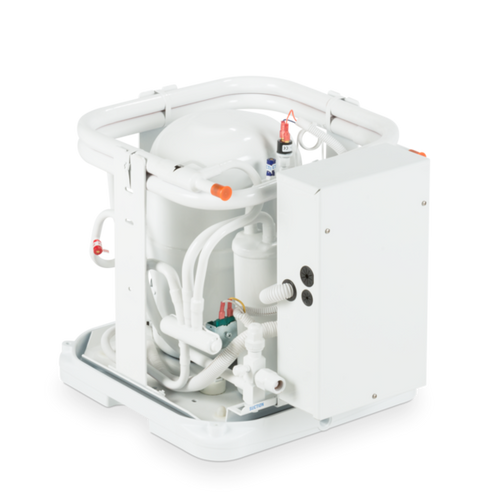
DEUX36-4663 230V/60Hz Dometic Emerald Titanium Units, R410A 201152231/9610004763

DEUX72-3853 Dometic Emerald Titanium Units, R410A 201152272/9610004826

DEUX60-3853 Dometic Emerald Titanium Units, R410A 201152266/9610004817

DEUX48-3853 Dometic Emerald Titanium Units, R410A 201152277/9610005044

DEUX36-3853 Dometic Emerald Titanium Units, R410A 201152230/9610004762

DEUX30-3853 Dometic Emerald Titanium Units, R410A 201152224/9610004756

DEUX24-3853 Dometic Emerald Titanium Units, R410A 201152208/9610004726

DEUX36S 230V/60Hz Dometic Emerald Titanium Units, R410A 2251 201152274/9610005040

DEUX30S 230V/60Hz Dometic Emerald Titanium Units, R410A 2251 201152220/9610004752

DEUX24S 230V/60Hz Dometic Emerald Titanium Units, R410A 2251 201152202/9610004721

DEGX16 230V/60Hz Dometic Emerald Units, R410A 201152194/9610005152
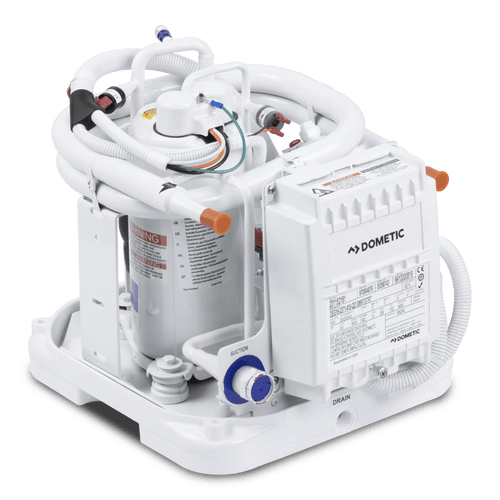
DEGX12 230V/60Hz Dometic Emerald Units, R410A 201152134/9610005146

DEGX10 230V/60Hz Dometic Emerald Units, R410A 201152114/9610005038

DEGX8 230V/60Hz Dometic Emerald Units, R410A 201152094/ 9610005144

DEGX6 230V/60Hz Dometic Emerald Units, R410A 201152074/9610005142

DEGX16 115V/60Hz Dometic Emerald Units, R410A 201150167/9610005140

DEGX12 115V/60Hz Dometic Emerald Units, R410A 201150124/9610005138

DEGX10 115V/60Hz Dometic Emerald Units, R410A 201150104/9610005145
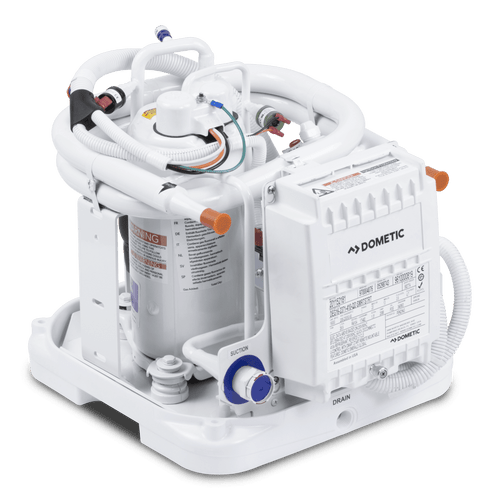
DEGX8 115V/60Hz DOMETIC Emerald Units, R410A 201150084/9610005143

DEGX6 115V/60Hz Dometic Emerald Units, R410A 201150064/9610005141

TWCX72 3853 TITAN with DDC Control 410A 260111422 / 9108893826

TWCX60 3853 TITAN with DDC Control 410A 260111432 / 9108893824

TWCX48 3853 TITAN with DDC Control 410A 260111423 / 9108916148

TWCX36-SC 3853 TITAN with DDC Control 410A 260111409 / 9108916143

TWCX60 2363 TITAN with DDC Control 410A 260111473 / 9108916151

TWCX30 2363 TITAN with DDC Control 410A 260111485 / 9108916138

TWCX48 2361 TITAN with DDC Control 410A 260111435 / 9108893817

TWCX36-SC 2361 TITAN with DDC Control 410A 260111412 / 9108915840

TWCX30 2361 TITAN with DDC Control 410A 260111471 / 9108916150

TWCX60 2251 TITAN with DDC Control 410A 260111447 / 9108916150
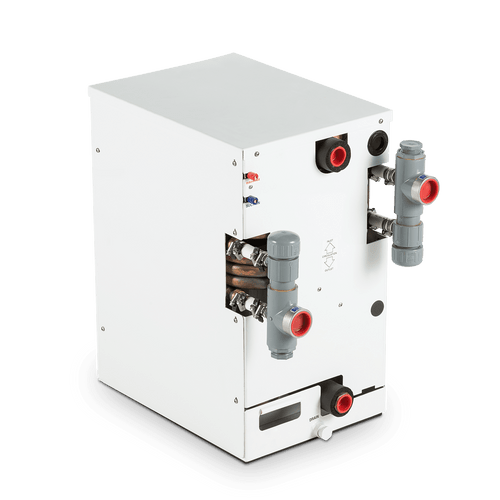
TWCX36 DOMETIC 2251 TITAN with DDC Control 410A 260111405 / 9108893815

TWCX48 2361 DDC Control Panel and 410A SS 260111443 / 9108916046

TWCX36 2361 DDC Control Panel and 410A SS 260111463 / 9108893814
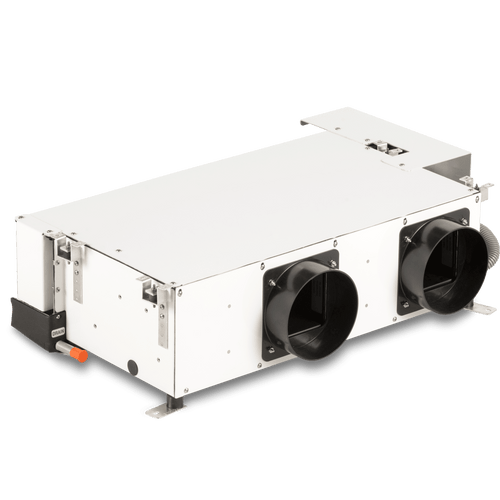
ATL36HVZ 8"MR 230V Dometic AT High Velocity Air Handlers 261301197 / 9108777054

ATL24HVZ-R 8"MR 230V Dometic AT High Velocity Air Handlers 261301653 / 9610001444

ATL24HVZ 8" MR 230V Dometic AT High Velocity Air Handlers 261301573 / 9108916880

ATL18HVZ-RH 6" MR 230V Dometic AT High Velocity Air Handlers 261301678 / 9610002765
Dometic ECD 16 Self-Contained Marine Air Conditioner - 16,000 BTU 115v 60 Hz - 207500316 / 9108732755 Enjoy ideal temperatures on your boat year-round with EnviroComfort (ECD series) self-contained air conditioning kits. Offering cooling or heating in...
Dometic ECD 16 Self-Contained Marine Air Conditioner - 16,000 BTU 230V 207500017 / 9108821279 Enjoy ideal temperatures on your boat year-round with EnviroComfort (ECD series) self-contained air conditioning kits. Offering cooling or heating in...
DIRECT EXPANSION SELF CONTAINED KIT 10,000 BTU/H--410A-DIG 115v 60 Hz 207500310 / 9108732759 Enjoy ideal temperatures on your boat year-round with EnviroComfort (ECD series) self-contained air conditioning kits. Offering cooling or heating in 6,000,...
DIRECT EXPANSION SELF CONTAINED KIT 10,000 BTU/H--410A-DIG 230v 60 Hz - 207500010 / 9108850337 Enjoy ideal temperatures on your boat year-round with EnviroComfort (ECD series) self-contained air conditioning kits. Offering cooling or heating in 6,000,...
DIRECT EXPANSION SELF CONTAINED KIT 6,000 BTU/H--410A-DIG 115v 60 Hz - 207500306 / 9108732762 Enjoy ideal temperatures on your boat year-round with EnviroComfort (ECD series) self-contained air conditioning kits. Offering cooling or heating in...
DIRECT EXPANSION SELF CONTAINED KIT 6,000 BTU/H--410A-DIG 230v 60 Hz - 207500307 / 9108844174 Enjoy ideal temperatures on your boat year-round with EnviroComfort (ECD series) self-contained air conditioning kits. Offering cooling or heating in 6,000,...
Self Contained Air Conditioning ECD3.5K/1-HV 115v/60 Hz 134A KIT
VARCX48E- 2371 DOMETIC Titanium Variable Capacity Chiller 260175082/ 9610005068 Titanium Variable Capacity Titanium Chiller, 48 000 BTU/h FEATURES: Variable capacity through unit's BTU range as thermal load changes Compact footprint Operates steadily at...
DEUX72-4663 230V/60Hz Dometic Emerald Titanium Units, R410A 201152273/9610004827 Dometic Emerald Titanium DEUX This titanium condenser has a square chassis for easy installation, while the reversing valve, pressure switches, and service ports are all...
DEUX60-4663 230V/60Hz Dometic Emerald Titanium Units, R410A 201152268/9610004819 Dometic Emerald Titanium DEUX This titanium condenser has a square chassis for easy installation, while the reversing valve, pressure switches, and service ports are all...
DEUX48-4663 230V/60Hz Dometic Emerald Titanium Units, R410A 201152279/9610005046 Dometic Emerald Titanium DEUX This titanium condenser has a square chassis for easy installation, while the reversing valve, pressure switches, and service ports are all...
DEUX36-4663 230V/60Hz Dometic Emerald Titanium Units, R410A 201152231/9610004763 Dometic Emerald Titanium DEUX This titanium condenser has a square chassis for easy installation, while the reversing valve, pressure switches, and service ports are all...
DEUX72-3853 Dometic Emerald Titanium Units, R410A 201152272/9610004826 Dometic Emerald Titanium DEUX This titanium condenser has a square chassis for easy installation, while the reversing valve, pressure switches, and service ports are all centrally...
DEUX60-3853 Dometic Emerald Titanium Units, R410A 201152266/9610004817 Dometic Emerald Titanium DEUX This titanium condenser has a square chassis for easy installation, while the reversing valve, pressure switches, and service ports are all centrally...
DEUX48-3853 Dometic Emerald Titanium Units, R410A 201152277/9610005044 Dometic Emerald Titanium DEUX This titanium condenser has a square chassis for easy installation, while the reversing valve, pressure switches, and service ports are all centrally...
DEUX36-3853 Dometic Emerald Titanium Units, R410A 201152230/9610004762 Dometic Emerald Titanium DEUX This titanium condenser has a square chassis for easy installation, while the reversing valve, pressure switches, and service ports are all centrally...
DEUX30-3853 Dometic Emerald Titanium Units, R410A 201152224/9610004756 Dometic Emerald Titanium DEUX This titanium condenser has a square chassis for easy installation, while the reversing valve, pressure switches, and service ports are all centrally...
DEUX24-3853 Dometic Emerald Titanium Units, R410A 201152208/9610004726 Dometic Emerald Titanium DEUX This titanium condenser has a square chassis for easy installation, while the reversing valve, pressure switches, and service ports are all centrally...
DEUX36S 230V/60Hz Dometic Emerald Titanium Units, R410A 2251 201152274/9610005040 Dometic Emerald Titanium DEUX This titanium condenser has a square chassis for easy installation, while the reversing valve, pressure switches, and service ports are all...
DEUX30S 230V/60Hz Dometic Emerald Titanium Units, R410A 2251 201152220/9610004752 Dometic Emerald Titanium DEUX This titanium condenser has a square chassis for easy installation, while the reversing valve, pressure switches, and service ports are all...
DEUX24S 230V/60Hz Dometic Emerald Titanium Units, R410A 2251 201152202/9610004721 Dometic Emerald Titanium DEUX This titanium condenser has a square chassis for easy installation, while the reversing valve, pressure switches, and service ports are all...
DEGX16 230V/60Hz Dometic Emerald Units, R410A 201152194/9610005152 Dometic Emerald Titanium DEGX This titanium condenser has a square chassis for easy installation, while the reversing valve, pressure switches, and service ports are all centrally located...
DEGX12 230V/60Hz Dometic Emerald Units, R410A 201152134/9610005146 Dometic Emerald Titanium DEGX This titanium condenser has a square chassis for easy installation, while the reversing valve, pressure switches, and service ports are all centrally located...
DEGX10 230V/60Hz Dometic Emerald Units, R410A 201152114/9610005038 Dometic Emerald Titanium DEGX This titanium condenser has a square chassis for easy installation, while the reversing valve, pressure switches, and service ports are all centrally located...
DEGX8 230V/60Hz Dometic Emerald Units, R410A 201152094/9610005144 Dometic Emerald Titanium DEGX This titanium condenser has a square chassis for easy installation, while the reversing valve, pressure switches, and service ports are all centrally located...
DEGX6 230V/60Hz Dometic Emerald Units, R410A 201152074/9610005142 Dometic Emerald Titanium DEGX This titanium condenser has a square chassis for easy installation, while the reversing valve, pressure switches, and service ports are all centrally located...
DEGX16 115V/60Hz Dometic Emerald Units, R410A 201150167/9610005140 Dometic Emerald Titanium DEGX This titanium condenser has a square chassis for easy installation, while the reversing valve, pressure switches, and service ports are all centrally located...
DEGX12 115V/60Hz Dometic Emerald Units, R410A 201150124/9610005138 Dometic Emerald Titanium DEGX This titanium condenser has a square chassis for easy installation, while the reversing valve, pressure switches, and service ports are all centrally located...
DEGX10 115V/60Hz Dometic Emerald Units, R410A 201150104/9610005145 Dometic Emerald Titanium DEGX This titanium condenser has a square chassis for easy installation, while the reversing valve, pressure switches, and service ports are all centrally located...
DEGX8 115V/60Hz DOMETIC Emerald Units, R410A 201150084/9610005143 Dometic Emerald Titanium DEGX This titanium condenser has a square chassis for easy installation, while the reversing valve, pressure switches, and service ports are all centrally...
DEGX6 115V/60Hz Dometic Emerald Units, R410A 201150064/9610005141 Dometic Emerald Titanium DEGX This titanium condenser has a square chassis for easy installation, while the reversing valve, pressure switches, and service ports are all centrally...
TWCX72 3853 TITAN with DDC Control 410A 260111422 / 9108893826 Dometic TWCX with Digital Diagnostic Control (DDC)is a high-performance, cost effective tempering unit. The reverse-cycle TWCX cools and heats, and is available in an expanded product range...
TWCX60 3853 TITAN with DDC Control 410A 260111432 / 9108893824 Dometic TWCX with Digital Diagnostic Control (DDC)is a high-performance, cost effective tempering unit. The reverse-cycle TWCX cools and heats, and is available in an expanded product range...
TWCX48 3853 TITAN with DDC Control 410A 260111423 / 9108916148 Dometic TWCX with Digital Diagnostic Control (DDC)is a high-performance, cost effective tempering unit. The reverse-cycle TWCX cools and heats, and is available in an expanded product range...
TWCX36-SC 3853 TITAN with DDC Control 410A 260111409 / 9108916143 Dometic TWCX with Digital Diagnostic Control (DDC)is a high-performance, cost effective tempering unit. The reverse-cycle TWCX cools and heats, and is available in an expanded product...
TWCX60 2363 TITAN with DDC Control 410A 260111473 / 9108916151 Dometic TWCX with Digital Diagnostic Control (DDC)is a high-performance, cost effective tempering unit. The reverse-cycle TWCX cools and heats, and is available in an expanded product range...
TWCX30 2363 TITAN with DDC Control 410A 260111485 / 9108916138 Dometic TWCX with Digital Diagnostic Control (DDC)is a high-performance, cost effective tempering unit. The reverse-cycle TWCX cools and heats, and is available in an expanded product range...
TWCX48 2361 TITAN with DDC Control 410A 260111435 / 9108893817 Dometic TWCX with Digital Diagnostic Control (DDC)is a high-performance, cost effective tempering unit. The reverse-cycle TWCX cools and heats, and is available in an expanded product range...
TWCX36-SC 2361 TITAN with DDC Control 410A 260111412 / 9108915840 Dometic TWCX with Digital Diagnostic Control (DDC)is a high-performance, cost effective tempering unit. The reverse-cycle TWCX cools and heats, and is available in an expanded product...
TWCX30 2361 TITAN with DDC Control 410A 260111471 / 9108916150 Dometic TWCX with Digital Diagnostic Control (DDC)is a high-performance, cost effective tempering unit. The reverse-cycle TWCX cools and heats, and is available in an expanded product range...
TWCX60 2251 TITAN with DDC Control 410A 260111447 / 9108916150 Dometic TWCX with Digital Diagnostic Control (DDC)is a high-performance, cost effective tempering unit. The reverse-cycle TWCX cools and heats, and is available in an expanded product range...
TWCX36 DOMETIC 2251 TITAN with DDC Control 410A 260111405 / 9108893815 Dometic TWCX with Digital Diagnostic Control (DDC)is a high-performance, cost effective tempering unit. The reverse-cycle TWCX cools and heats, and is available in an expanded product...
TWCX48 2361 DDC Control Panel and 410A SS 260111443 / 9108916046 Dometic TWCX with Digital Diagnostic Control (DDC)is a high-performance, cost effective tempering unit. The reverse-cycle TWCX cools and heats, and is available in an expanded product range...
TWCX36 2361 DDC Control Panel and 410A SS 260111463 / 9108893814 Dometic TWCX with Digital Diagnostic Control (DDC)is a high-performance, cost effective tempering unit. The reverse-cycle TWCX cools and heats, and is available in an expanded product range...
ATL36HVZ 8"MR 230V Dometic AT High Velocity Air Handlers 261301197 / 9108777054 DOMETIC AT-HVAIR HANDLER. The AT-HV series of air handlers feature powerful, rotatable blowers for superb air distribution. The AT-HV series replaces Flex-Duct and...
ATL24HVZ-R 8"MR 230V Dometic AT High Velocity Air Handlers 261301653 / 9610001444 DOMETIC AT-HVAIR HANDLER. The AT-HV series of air handlers feature powerful, rotatable blowers for superb air distribution. The AT-HV series replaces Flex-Duct and...
ATL24HVZ 8" MR 230V Dometic AT High Velocity Air Handlers 261301573 / 9108916880 DOMETIC AT-HVAIR HANDLER. The AT-HV series of air handlers feature powerful, rotatable blowers for superb air distribution. The AT-HV series replaces Flex-Duct and...
ATL18HVZ-RH 6" MR 230V Dometic AT High Velocity Air Handlers 261301678 / 9610002765 DOMETIC AT-HVAIR HANDLER. The AT-HV series of air handlers feature powerful, rotatable blowers for superb air distribution. The AT-HV series replaces Flex-Duct and...
© 2024 WATER YACHT SOLUTIONS Powered by BigCommerce All rights reserved. | Sitemap
To use all available functions on this website, JavaScript must be enabled in your browser.

- Find Your Region

- PERFECTING THE AIR
- ABOUT DAIKIN
- PRODUCTS & SERVICES
- INVESTOR RELATIONS
- SUSTAINABILITY
Through Perfecting the Air, Daikin strives to make the world’s spaces happier and more comfortable.
- DAIKIN STRATEGY FOR PERFECTING THE AIR
- 100 YEARS OF PERFECTING THE AIR
- The POWER TO CREATE THE AIR OF THE FUTURE
- THE IDEAL AIR BY DAIKIN
- PERFECTING THE AIR STORIES
- Daikin at a Glance
- Japan Brand, Daikin
- Daikin for All Your Needs
- Daikin Discovery Hall
- Benefits of Daikin Technology
- Expert Ventilation Methods
- Energy Efficient AC Subscription Service
- History of Daikin Innovation
- Daikin Global Case Study
- VRV , Opening the New Era

- 100 Years of Perfecting the Air

- The Power to Create the Air of the Future

- The Ideal Air by Daikin
- ABOUT DAIKIN TOP
- Message from Management
- Our Group Philosophy
- Daikin's Vision
- Management Overview
- Initiatives For Intellectual Properties
- Business Guide
- Corporate Governance
- Corporate Reports and Publications
- DAIKIN design
- Technology and Innovation Center
- PRODUCTS & SERVICES TOP

Daikin leverages its experience and technology to deliver air conditioning solutions that meet the demands of any setting.
- Split/Multi-Split
- Air to Water Heat Pump Systems
- Heating Systems
- Air Purifiers
- Ventilation
- Control Systems
- Air Cooled Chillers
- Water Cooled Chillers
- Air Side Equipment
- Refrigeration
- Marine HVAC
- Air Filters
- Troubleshooting (Chatbot)
- Troubleshooting (FAQ)
- Maintenance Tips
- Preventive Maintenance Service
- Training & Technical Support
- Parts & Consumables
- Error Codes
Pioneering Fluorine Technology Providing Solutions for Life
Utilizing IPM motor and inverter technology for greater energy savings
- INVESTOR RELATIONS TOP
- Financial Data
- Non-Financial Information
- Shareholder Information
- IR Calendar
- SUSTAINABILITY TOP
- INTRODUCTION
- ENVIRONMENT
- SUSTAINABILITY REPORT
- ENVIRONMENT-RELATED CONTENT
- CAREERS TOP
- PEOPLE-CENTERED MANAGEMENT
- DESIRED HUMAN RESOURCES
- GLOBAL ACTIVITIES OF DAIKIN EMPLOYEES
- CAREER PATHS
- INTERNSHIPS

- What is People-Centered Management?
- Perfecting the Air TOP
- Daikin Strategy for Perfecting the Air
- Perfecting the Air Stories
- Daikin Brand
- Daikin Tech-Knowledge
- Daikin Achievements
- About Daikin Top
- Corporate Information
- Products & Services Top
- Air Conditioning & Refrigeration
- Fluorochemicals
- Oil Hydraulics
- Investor Relations Top
- Management Policy
- Sustainability Top
- Daikin CSR at a Glance
- Daikin’s Sustainability
- CSR and Strategy
- Environment
- New Value Creation
- Customer Satisfaction
- Human Resources
- Respect for Human Rights
- Supply Chain Management
- Stakeholder Engagement
- Communities
- Key Activities
- Sustainability Report
- Environment-Related Content
- Search for CSR Contents
- Careers Top
- Products & Services
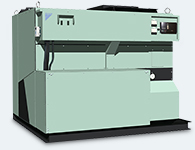
Marine air conditioning is a highly specialized area, in which Daikin is ideally placed to offer a dedicated service. Daikin provides innovative marine climate control solutions and support services to meet the needs of ship yards, ship owners and ship suppliers, via an extensive network of marine HVAC contractors and installation engineers.
Daikin Advantage
Energy saving and cost saving.
Highly efficient, energy saving, and cost saving operation is realized with advanced inverter and heat pump technologies.
Dedicated Service
A dedicated team and extensive network offer highly efficient installation, service, and maintenance.
Anti-corrosion treatment is provided for installation in harsh environmental conditions.
Custom-built Installation
Custom-built installation and flexibility in power supply provide solutions to precisely meet customer requirements.
Customized Solutions
Daikin’s marine team offers total customization of standard systems to meet specific customer needs for marine air conditioning and marine refrigeration technology. Spare parts are available for the entire range of Daikin marine products to ensure prompt service from our dedicated team.
Extensive Product Range
Daikin offers a wide selection of energy efficient marine heating and cooling solutions that include deck, galley, packaged, and compact condensing units complying with all relevant marine certification requirements.
Product Lineup
Daikin offers the most complete portfolio of products on the market, so you can find the best solution to suit your marine operation. Your specifier or consultant can advise which combination of solutions is ideal for your requirements. Here are some of the possible options:
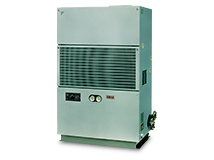
Packaged Units
Packaged units provide a self-contained marine air conditioning solution, delivering high energy efficiency and a wide operation range.
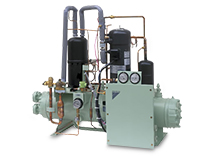
Small Condensing Units
Small condensing units offer a compact and highly reliable refrigeration solution for marine environments.
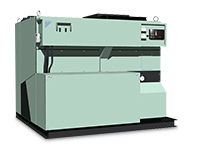
Deck units provide an energy efficient solution for independent or centralized air conditioning.
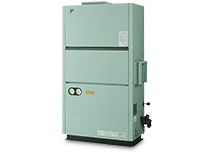
Galley Series Units
Galley series units offer highly efficient marine galley air conditioning, capable of responding to a wide temperature range.
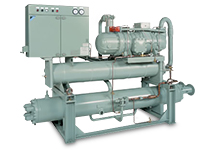
Chillers meet the needs of any environment.
- Container Refrigeration Units
- Packaged Air Conditioners for Facilities & Factories
The products or features on this page may not be available in your region. Please visit your local website for details on the products and features available in your region.
Visit Daikin MR Engineering website for more information.
- Perfecting the air
Find out more in your region.
Global Locations
- DESIGN & TECHNOLOGY
- After Sales Services
- People-Centered Management
- Desired Human Resources
- Global Activities of Daikin Employees
- Career Paths
- Internships
- Press Releases
GLOBAL LOCATIONS
©DAIKIN INDUSTRIES, Ltd., 2024
- Privacy Policy
- Terms of Use
- About Cookies


Service Locator
- Angler Endorsement
- Boat Towing Coverage
- Mechanical Breakdown
- Insurance Requirements in Mexico
- Agreed Hull Value
- Actual Cash Value
- Liability Only
- Insurance Payment Options
- Claims Information
- Towing Service Agreement
- Membership Plans
- Boat Show Tickets
- BoatUS Boats For Sale
- Membership Payment Options
- Consumer Affairs
- Boat Documentation Requirements
- Installation Instructions
- Shipping & Handling Information
- Contact Boat Lettering
- End User Agreement
- Frequently Asked Questions
- Vessel Documentation
- BoatUS Foundation
- Government Affairs
- Powercruisers
- Buying & Selling Advice
Maintenance
- Tow Vehicles
- Make & Create
- Makeovers & Refitting
- Accessories
- Electronics
- Skills, Tips, Tools
- Spring Preparation
- Winterization
- Boaters’ Rights
- Environment & Clean Water
- Boat Safety
- Navigational Hazards
- Personal Safety
- Batteries & Onboard Power
- Motors, Engines, Propulsion
- Best Day on the Water
- Books & Movies
- Communication & Etiquette
- Contests & Sweepstakes
- Colleges & Tech Schools
- Food, Drink, Entertainment
- New To Boating
- Travel & Destinations
- Watersports
- Anchors & Anchoring
- Boat Handling
- ← Maintenance
Air Conditioning Maintenance For Your Boat
Advertisement
If you're lucky enough to have air conditioning on your boat, here's what you need to know about keeping that cold air cranking.
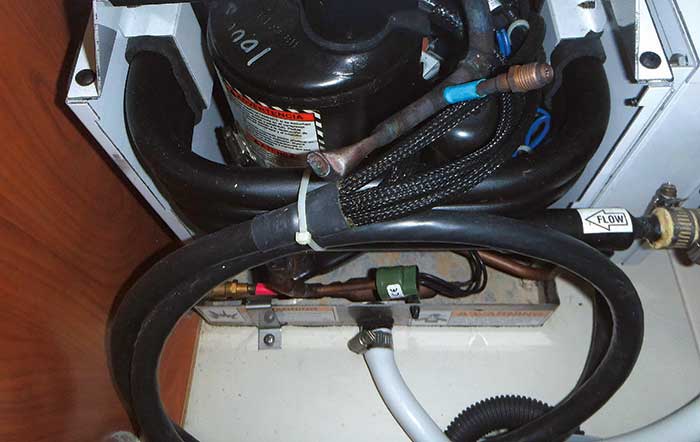
While boating is often about enjoying fresh air on deck, air conditioning can be a real game-changer, especially if you regularly overnight aboard in warmer climates. That said, AC systems are one of those onboard items that rarely get a second thought — until they stop working. Here's how to ensure your system keeps cranking out cool goodness in even the sweatiest of weather.
System Basics
Air conditioning systems come in a wide variety of sizes and configurations. However, they all contain three major components: an evaporator (where “boiling” refrigerant absorbs heat from the air), a compressor (which pushes the refrigerant through the system), and a condenser, where the refrigerant is cooled prior to being returned to the evaporator.
Marine air conditioning units are typically direct expansion designs, which means they pump refrigerant directly to air handlers located in the boat's interior. Larger vessels may instead use a chilled-water system, which cools and circulates cold freshwater through the air handlers instead of refrigerant.
The key to keeping your air conditioner operating reliably is regular maintenance. The first place to look for recommended maintenance is your owner's manual, but here are a few general tips that can be used to help maintain most any AC system.
1. Monitor the water flow. Marine air conditioners work by exchanging heat with circulating seawater. When problems occur, one of the most common causes is lack of water flow through the system. Signs of a saltwater system with restricted water flow can range from a lack of cooling output to increased frequency of on/off cycling of the unit as it struggles to operate.
Monitoring the water flow at the output discharge thru-hull is an easy way to gauge the performance of the raw water-cooling system. Checking the flow of discharge water is something that should be done each time you start your air conditioning system and occasionally during operation.
A discharge that's weak or reduced to a trickle is a sure indication that something's going on, and that something is not good. Most AC systems also incorporate a safety switch that turns off the compressor in the event of insufficient water flow. If you turn on your system and it runs for a bit, then shuts down, it's possible the safety switch has tripped and you need to check the cooling water system for restrictions or blockage. The control panel will also likely display a fault code, which can help narrow down troubleshooting.
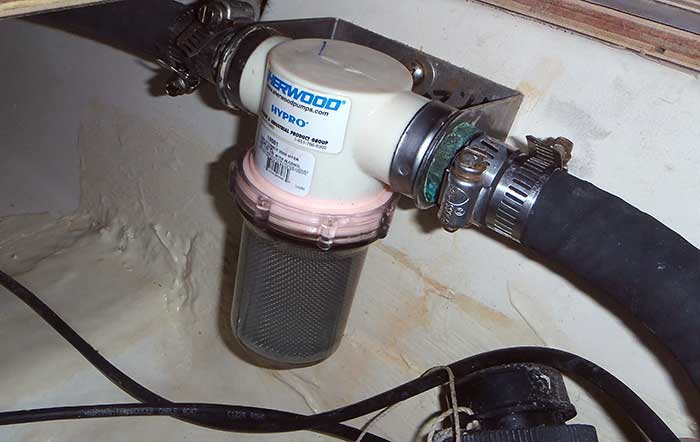
2. Regularly check the cooling water intake strainer. The strainer is located between the raw water intake seacock and the unit's pump. Shut off the seacock, then access and inspect the strainer basket, ensuring it's clear of debris and growth. Once the strainer basket is removed, open the seacock briefly to ensure nothing is clogged in front of the strainer. You'll also want to carefully check the strainer basket for damage. The fine, stainless steel mesh baskets found in many A/C strainers can erode rapidly due to the constant flow of water, so keep spares on hand.
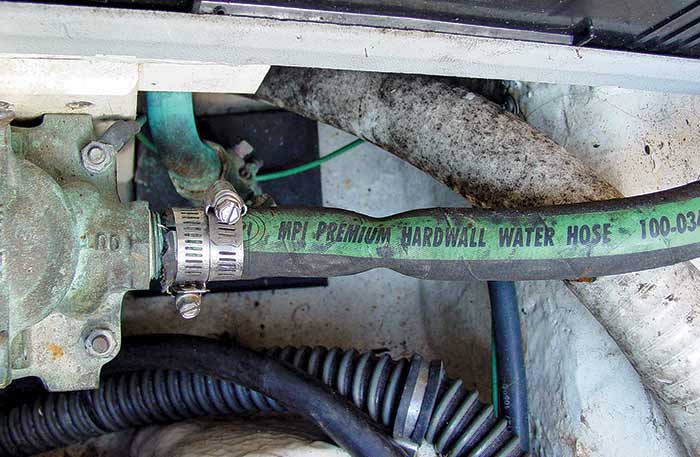
3. Check the condition of all hose runs and connections. Begin at the seacock and work your way through the system, from seacock to strainer to pump to air conditioning unit and finally the overboard discharge thru-hull. Look for issues such as leaks, corroded or broken hose clamps, chafe, and collapsed hoses or those showing signs of age or deterioration (such as cracks or swelling at the hose clamps). Seawater cooling hoses should also be double clamped where possible if there is sufficient hose barb to allow it.

4. Shut off the AC when you're not on board. Hose failure is never a good thing, but it can be particularly bad for owners who become complacent about continually running their air conditioning when they're not there. If a raw water cooling hose fails with no one onboard, the continuous pumping of seawater can easily sink a boat. A less dramatic reason to avoid running your air conditioning 24/7 is that the oxygenated seawater produced by this constant flow enables all kinds of marine critters to take up residence and thrive in your cooling system.
5. Periodically flush the condenser coils. Scale can build up on the condenser coils, restricting water flow. The coils should be flushed periodically with a weak solution of biodegradable acid to remove both scale and marine growth, typically every two to five years (depending on where the boat is located and how often the air conditioning is used). Back-flushing the system using dock or pressurized water is another option to try if the system is clogged.
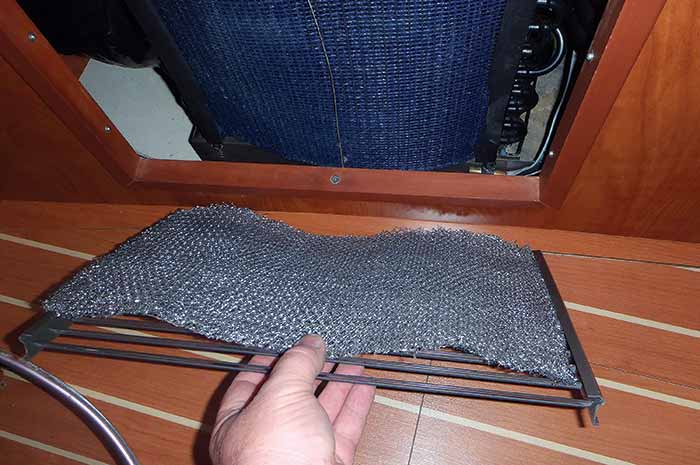
6. Clean the air filters. In addition to cooling water, an air conditioner needs plenty of airflow to perform properly. Good quality, properly fitted air filters are crucial to protecting your AC unit against dirt and dust. Most systems have two air filters: one behind the return air grill and one at the evaporator unit. Air filters should be cleaned monthly as described in the owner's manual, typically by vacuuming or removal and washing with plain water, allowing them to dry thoroughly before reinstalling.
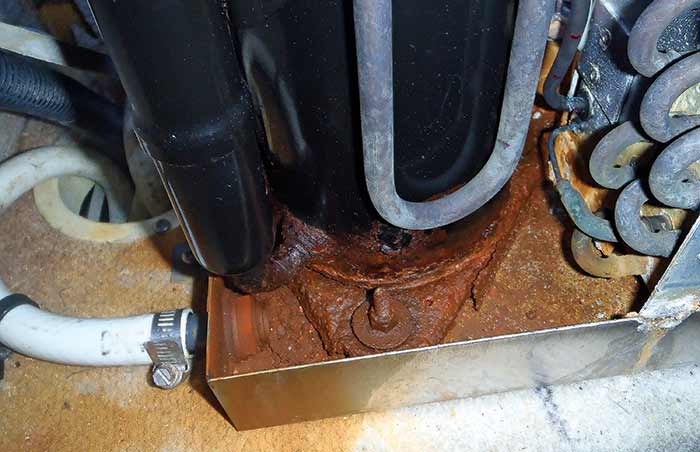
7. Inspect the condensate pan. This is the tray (sometimes two trays) below your air conditioning unit that collects the water (humidity) pulled from the air as it's being cooled. The two things to look for here are proper drainage and corrosion of the pan itself.
The pan should be plumbed so it drains overboard or into a sump, where the water is then pumped overboard. Allowing condensate to drain into the bilge is not recommended. A simple way to check the drain for proper operation is to temporarily plug the drain and pour water into the pan, which should then drain away within about 30 seconds of being unplugged.
If the drain hose is clogged, it can be blown clear with compressed air or pressurized water. If the pan is corroded, particularly to the point it can no longer contain the condensation, it should be repaired or replaced.
8. Check the pressure in chilled-water air conditioning systems. Maintenance requirements for a chilled water air conditioning system are similar to those for a direct-expansion system, however, they must be filled with water to operate properly (similar to refrigerant in a direct expansion system). They will typically have pressure gauges, allowing you to check for leaks or air in the system, which should also be part of your regular maintenance checks.
AC Winterization
Always follow the steps outlined by the manufacturer for winterization of your air conditioning system, such as during your fall layup. However, here are a few general tips for winterizing a typical, raw water-cooled system. Keep in mind that specialized systems (such as a chill water unit) will likely have additional requirements.
- Drain or purge the system of water from the raw water intake seacock to the AC pump (including the raw water strainer).
- Disconnect the hose at the outlet of the AC pump and purge the reminder of the system using compressed air.
- An alternative to the above would be to flush the system with antifreeze. Just be sure that the entire system is protected (e.g., seacock, strainer, pump, and the rest of the AC raw-water plumbing).
Related Articles
The truth about ceramic coatings for boats.
Our editor investigates the marketing claims of consumer-grade ceramic coatings.
Fine-Tune Your Side Scan Fishfinder
Take your side-scanning fishfinder off auto mode, and you’ll be spotting your prey from afar in no time
DIY Boat Foam Decking
Closed-cell foam flooring helps make boating more comfortable. Here’s how to install it on your vessel
Click to explore related articles
Frank Lanier
Contributing Editor, BoatUS Magazine
Capt. Frank Lanier is a SAMS Accredited Marine Surveyor with more than 40 years of experience in the marine and diving industries. He’s also an author, public speaker, and multiple award-winning journalist whose articles on boat maintenance, repair, and seamanship appear regularly in numerous marine publications worldwide. He can be reached via his YouTube channel “Everything Boats with Capt. Frank Lanier” and website captfklanier.com.
BoatUS Magazine Is A Benefit Of BoatUS Membership
Membership Benefits Include:
Subscription to the print version of BoatUS Magazine
4% back on purchases from West Marine stores or online at WestMarine.com
Discounts on fuel, transient slips, repairs and more at over 1,200 businesses
Deals on cruises, charters, car rentals, hotel stays and more…
All for only $25/year!
We use cookies to enhance your visit to our website and to improve your experience. By continuing to use our website, you’re agreeing to our cookie policy.

- Chiller Air Cooled
- Self-Contained Air Cooled
- Marine Air Conditioning Water Cooled Chillers
- Self-Contained Water Cooled
- Roof Top Units
- Webasto Marine Air Conditioning
- Keel Coolers
- Adapters & Transition Boxes
- Grilles & Vents
- Compressors
- Electronics
- Heat Exchangers
- Install Kits
- Spare Parts
- Marine Plumbing
- 12-24 Volt DC Systems
- Design and Engineering
- Diagnostic Monitors
- Mini Split Systems
- Chilled Water Fan Coils
- Variable Frequency Drives & Digital Scroll Compressors
- 5 Things to know before buying a marine air conditioning pump
- Flagship warranty
- How to size your boat
- Installation Do’s and Don’ts
- Manufacture Comparison
- Multiple unit installations
- Pump manufacture conversion
- Reverse Cycle Heat VS Electric Heat
Manufacturer of
Marine Air Conditioning Systems
for the Recreational, Commercial and Military Industries

Manufactured with pride in the USA
FLAGSHIP MARINE AIR CONDITIONING SYSTEMS
WATER COOLED
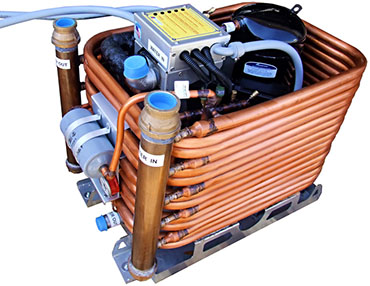
Self-Contained
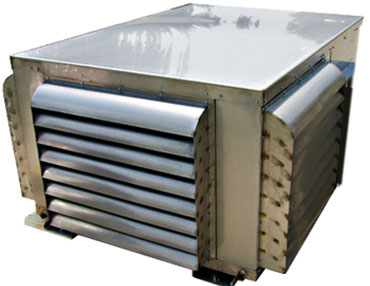
OUR FLAGSHIP ACCESSORIES & PUMPS
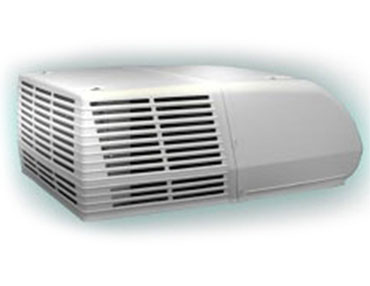
MARCH PUMPS

BlueCool C-Series
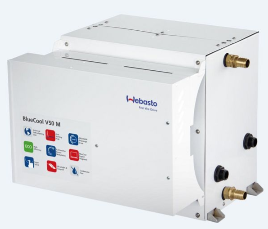
BlueCool V-Series
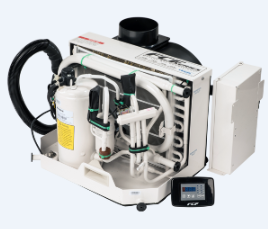
Air Handlers
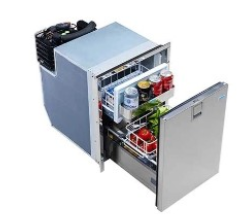
Refrigerators

Water Heaters
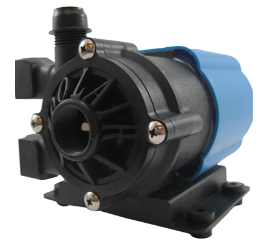
Kool Air Pumps
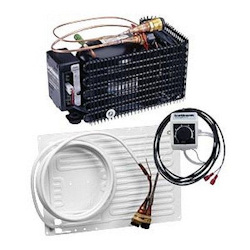
Cold Plates
State Of The Art Marine Air Conditioning Units
Made ONLY with DOMESTIC Alloys
Flagship Chillers Mission Critical Since 1995
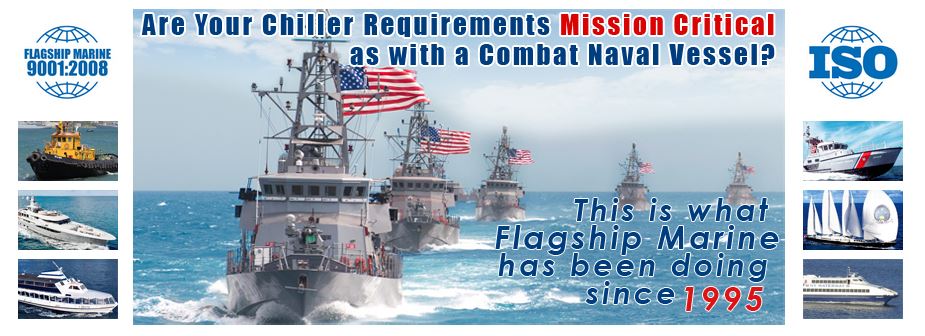
Titanium Review for Seawater Applications
By: Robert Houser, ATI Wah Chang
“Extensive bio-fouling of titanium has been observed after only 800 hours of immersion in sea water. This is because titanium has no toxicity towards marine organism; it is an environmentally friendly alloy…”
“In applications where flow velocities need to be less than 8 ft/sec (2.4 m/sec), it is recommended that chlorine be added to the system. Chlorine has been found to be very effective and as little as 0.5 parts per million can successfully maintain a thermally clean system and prevent hard fouling organisms…”
“Titanium is a very noble metal. When coupled to other metals, titanium will be the cathode and the other metal will be the anode and corrode. This galvanic effect may create excessive hydrogen and be absorbed by the titanium, which is a concern because the material can become brittle and eventually break. If dissimilar metals have to be coupled, it is best to utilize insulation products.”
Read Full Article
Chillers Water Cooled
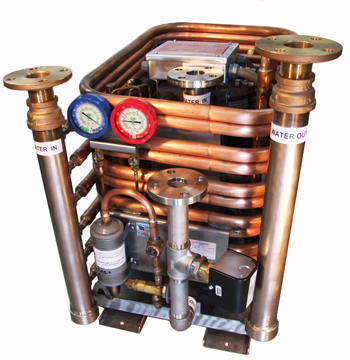
Inquire Form
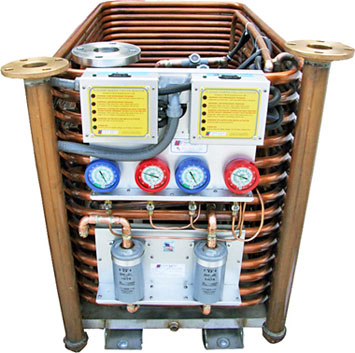
Self Contained Water Cooled Chillers
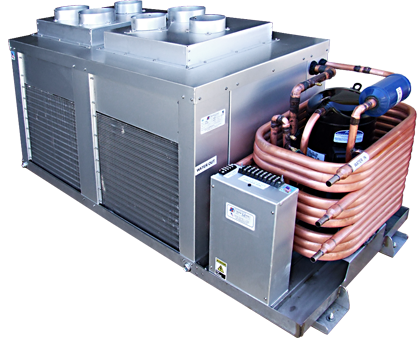
What are VFD Controls?
Variable speed units are indeed more efficient and will save you about twenty bucks a month in electricity, however they are a LOT more complex, have many more printed circuit boards and are considerably more expensive to buy. The “boards” may be free with some manufacturers, but the service calls are not $$$$.
VFDs will reduce/eliminate the start up surge & flickering TVs and you can control the speed of the compressor, so most of the benefits of variable speed units are reaped with a very reliable, time tested and relatively inexpensive over the counter VFD controller. If you have single phase 220 our VFD units will have three phase compressors in addition to the VFD, so the surcharge is relatively small.
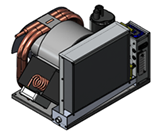
Self Contained Air Cooled Chillers

Chillers Air Cooled

FM 120CWAC-V
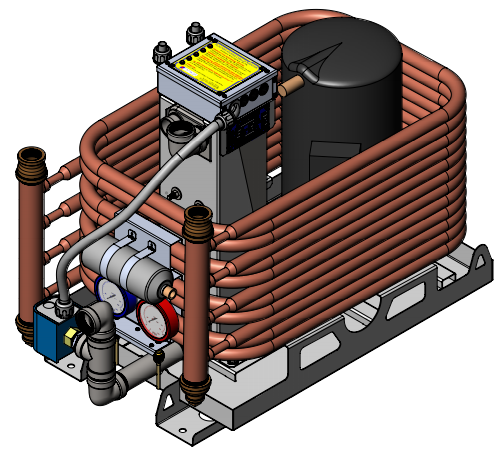
FM 120SSAC-V
Fm 120ssac-h, fm120cwac-h.

- Where To Buy
- Dealer Log In

MARINE AIR CONDITIONERS

Marine Air Conditioners
Available from 6,000 to 72,000 BTU/h

You can buy CTM marine air conditioners from these authorized dealers
Marine pumps.
CTM Pumps operate with exceptional quietness, making them ideal for noise-sensitive environments. Their advanced design minimizes vibrations and ensures smooth, silent operation.

The CTM Pumps are designed with a specialized rust-free protection coat, ensuring they remain durable and resistant to corrosion even in the harshest conditions.
Trusted Partners

Unmatched Support
Access electronic catalogs for spare parts, user manuals, and installation & troubleshooting tutorial videos!
tutorial videos
troubleshooting
user manuals

Titanium Condensers
316 Stainless Steel Chassis
Oversized Piping
Copper in Copper Air Handler Coils
High Velocity Blowers
Non-Proprietary Parts

Flow Marine Systems
Marine air conditioning & refrigeration systems. innovative designs. quality materials. unmatched customer service..
With our cutting-edge technologies, superior materials, and dependable customer support, Flow Marine Systems has captured the market with groundbreaking designs, trusted by boaters worldwide. We are committed to delivering top-of-the-line marine air conditioning & refrigeration systems that meet and exceed the unique requirements of your vessel.
Our Products
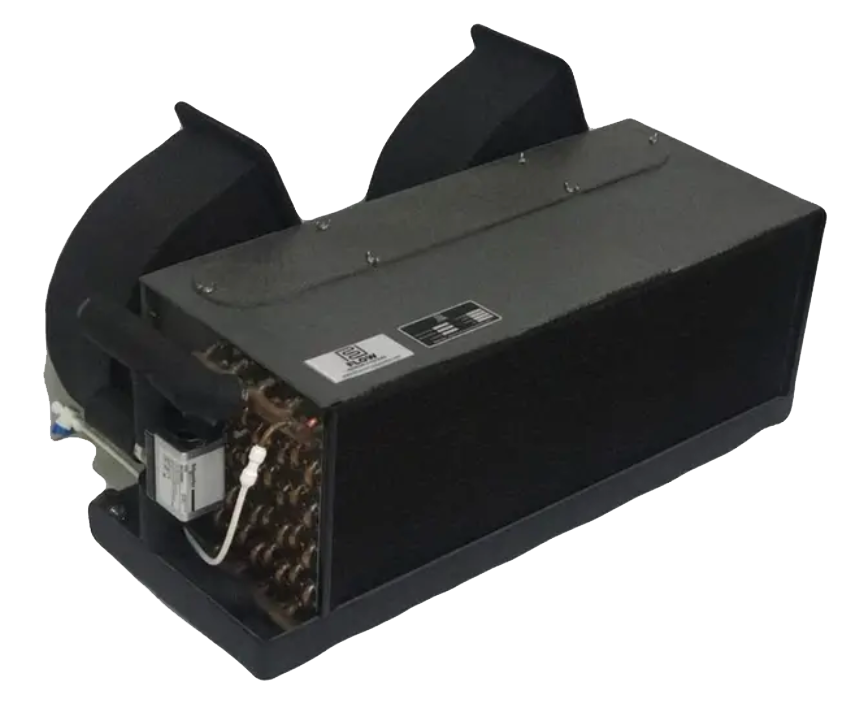
Chilled Water Air Handlers
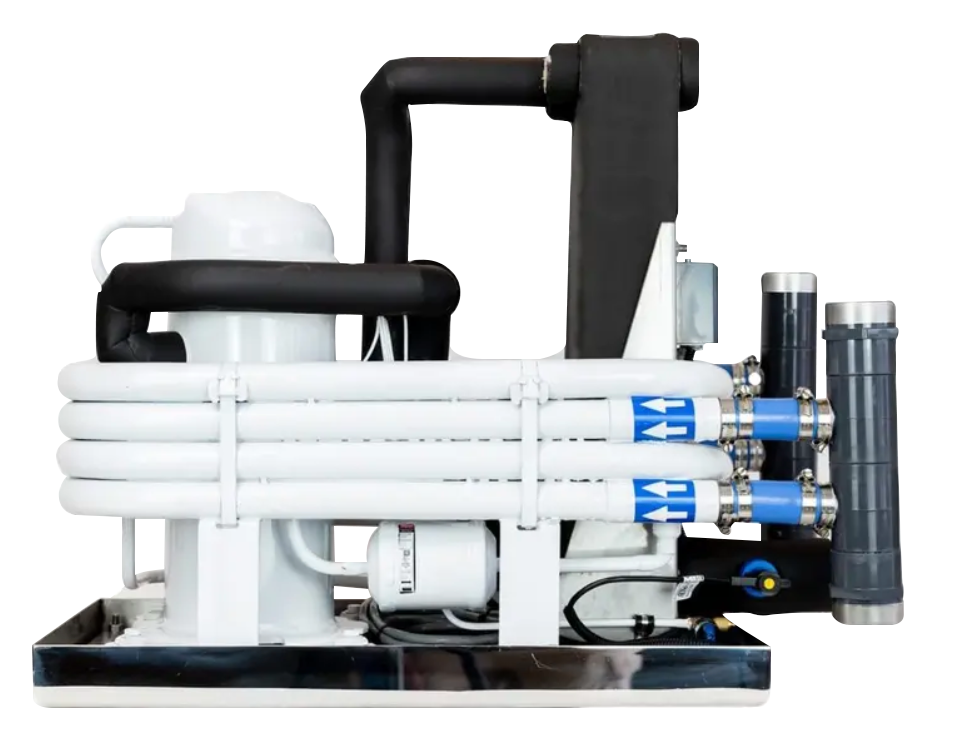
Titanium Marine Chillers
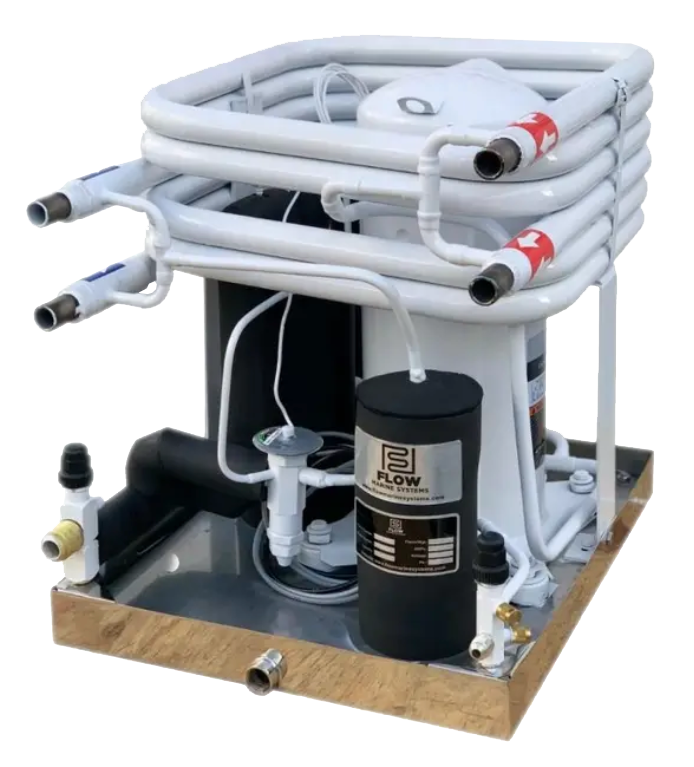
Direct Expansion Condensers
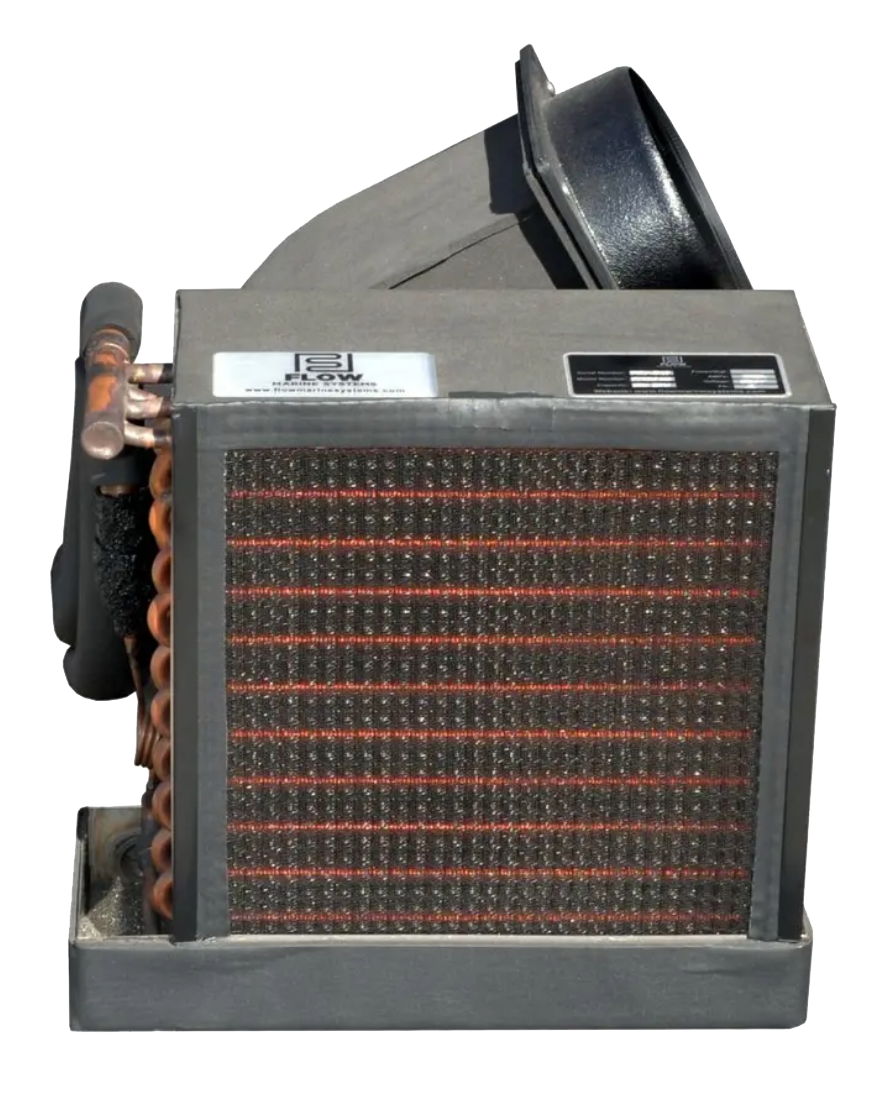
Direct Expansion Air Handlers
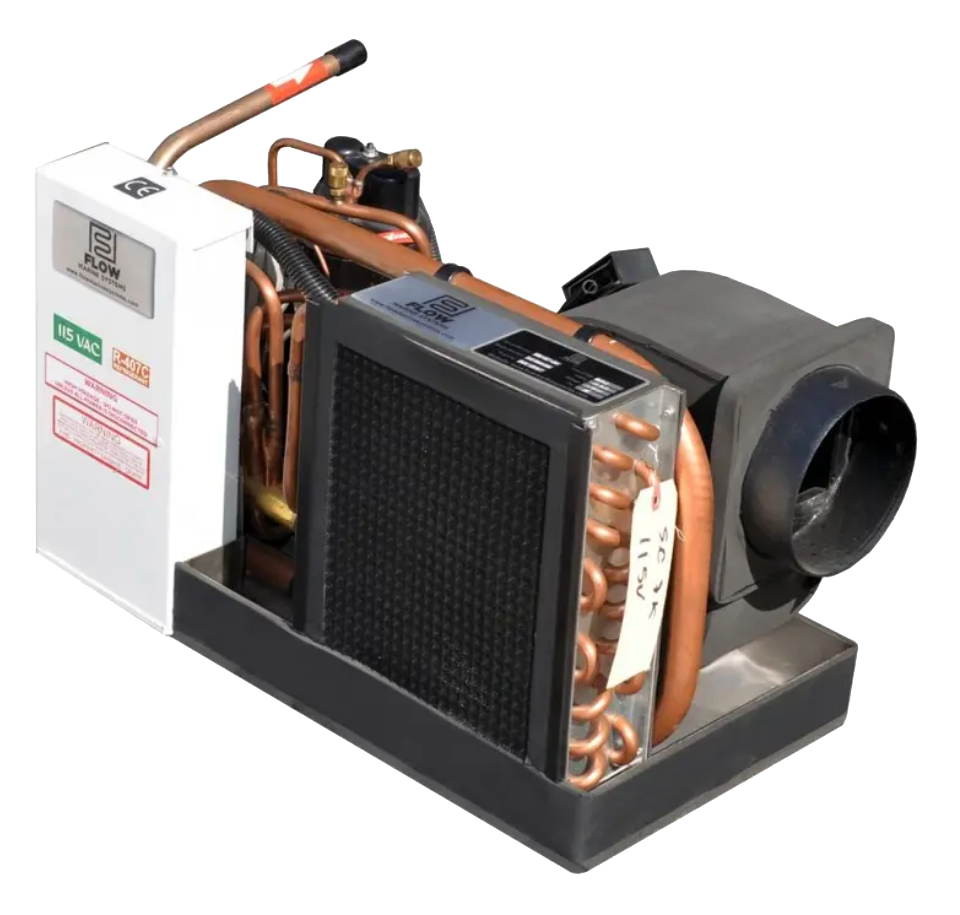
Self-Contained Units
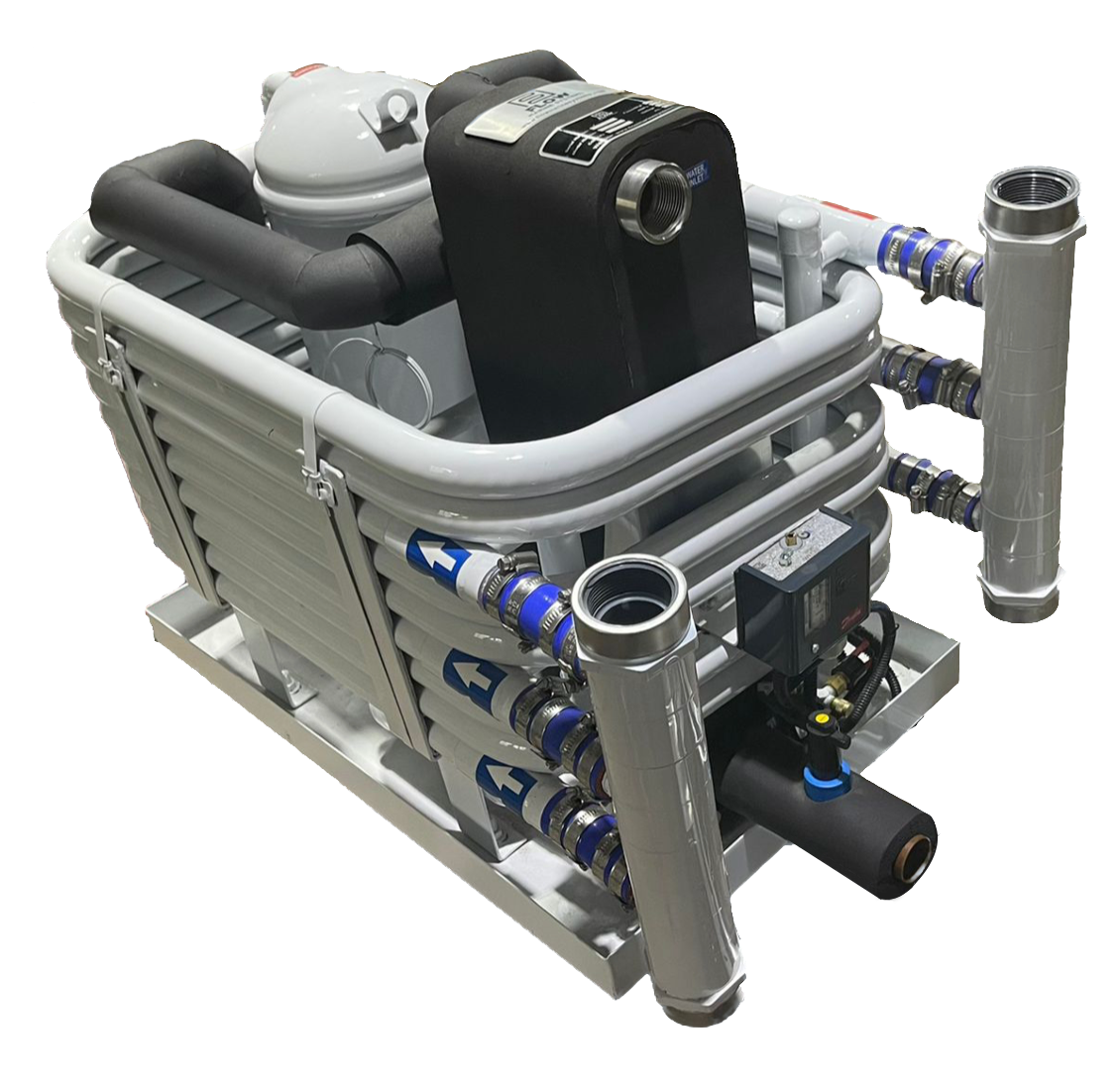
Compact Titanium Chillers
Trust the numbers, more boaters worldwide trust flow marine systems.

Satisfied Customers
Years in business, product lines.
UNITED STATES US VIRGIN ISLANDS MEXICO | EUROPE
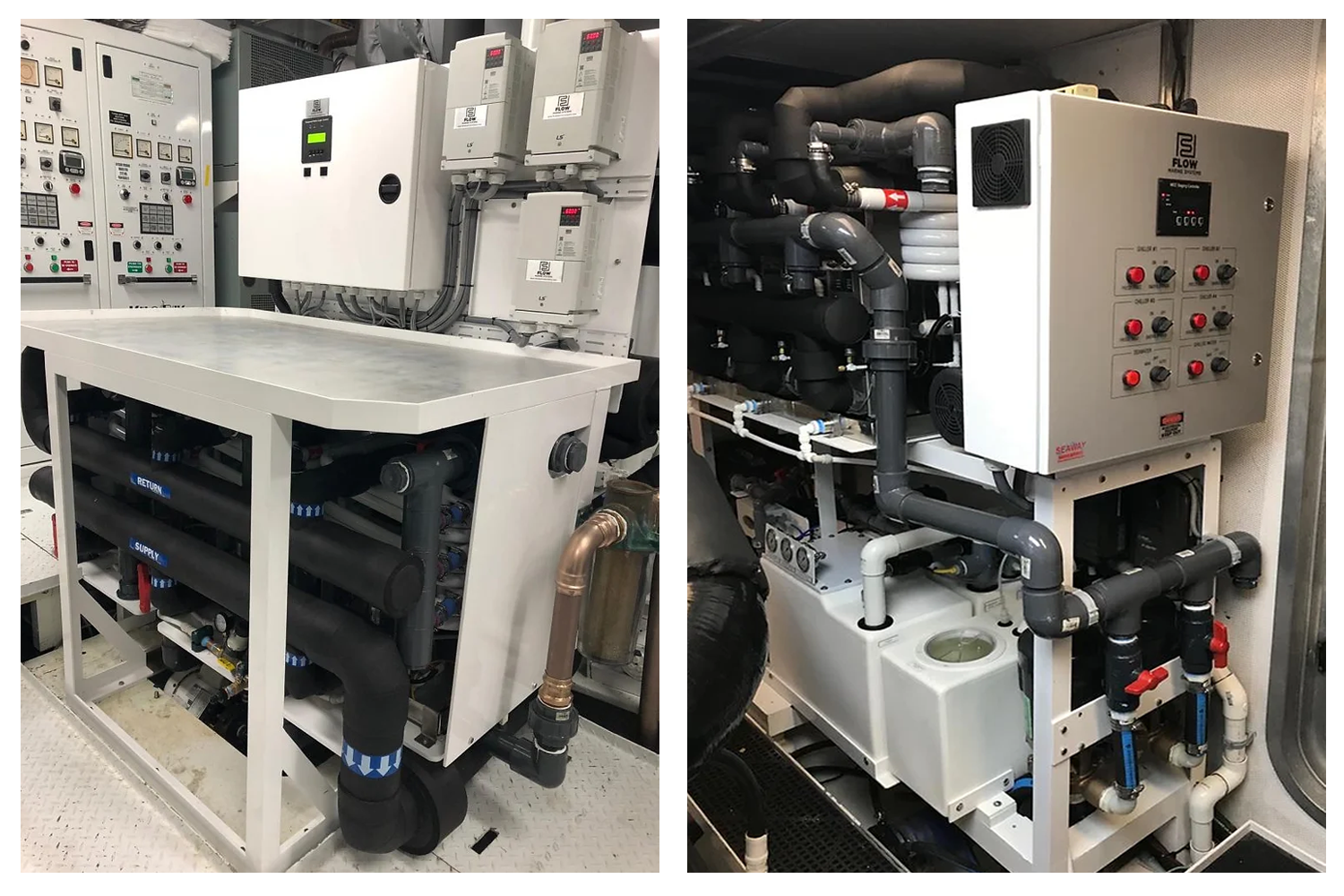
Featured Projects
Flow Marine Systems products are available through our dealer network. Need help? Contact our support team today at (954) 248-8010.
What Can We Custom Design & Build For You?
We design and manufacture custom marine air conditioning & refrigeration that ensures optimal performance and efficiency for your specific application.
With our cutting-edge technologies, superior materials, and dependable customer support, Flow Marine Systems has captured the market with groundbreaking designs, trusted by boaters worldwide.
our address
2917 SW 2nd Avenue Fort Lauderdale, FL 33315
[email protected]
- 135 Adams Ave, Hempstead, NY 11550
- 516-485-9898
- 4118 Sunrise Hwy, Oakdale, NY 11769
- 631-563-7071

Air Conditioning
Manufactured Partners

About Auto/Truck
Learn About Automotive Air Conditioning Hoses
At Moreland Hose, we understand the essential role that A/C hoses play in the efficiency and longevity of your air conditioning systems. Recognizing that these are critical wear-components, we offer customized A/C hose fabrication services tailored to your specific needs – while you wait! Moreover, we provide bulk hoses and fittings for those who prefer to create their own assemblies. If you have an existing hose, bring it to us and we’ll match it up. For new installations, share with us the length and type of fittings required, and we will custom-build a hose for you on the spot. Our offerings include barrier, reduced barrier, and braided stainless steel varieties, suitable even for heavy-duty applications such as buses, trucks, and trains. And remember, selecting the correct hose based on the type of refrigerant used is crucial for optimum performance. Don’t wait for your A/C system to fail! Visit Moreland Hose today, and experience our commitment to your cooling solutions. Get your custom A/C hose now and stay ahead of the heat!

Know About Automotive Air Conditioning Hoses
Moreland Hose is your one-stop destination for top-tier A/C hoses and assemblies, the heart of any well-functioning air conditioning system. Our products are designed to provide superior durability and performance, suitable for various applications, including automotive, commercial, and residential. Manufactured with utmost precision, our A/C hoses and assemblies ensure reliable transmission of refrigerant, contributing significantly to your system’s efficiency and lifespan. Don’t let subpar components compromise your cooling needs. It’s time to step up your game with Moreland Hose’s A/C hoses and assemblies. Visit our website or get in touch with our expert team today, and learn how our solutions can help elevate your air conditioning system’s performance. Start making the most out of your cooling system with Moreland Hose now!
Product Images
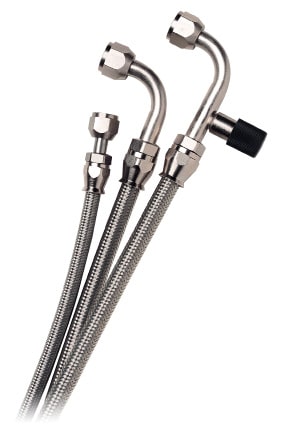
Braided Stainless A/C hose
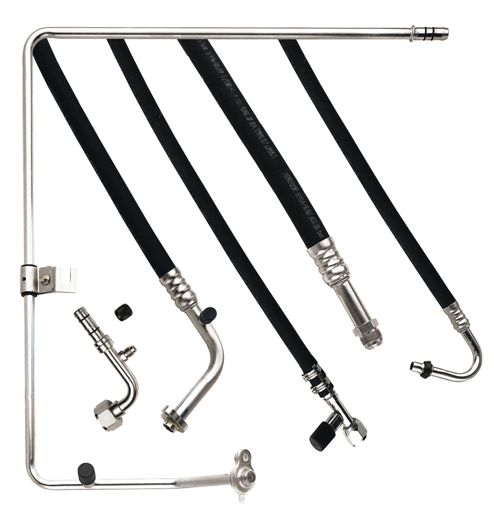
Reduced Barrier A/C hose
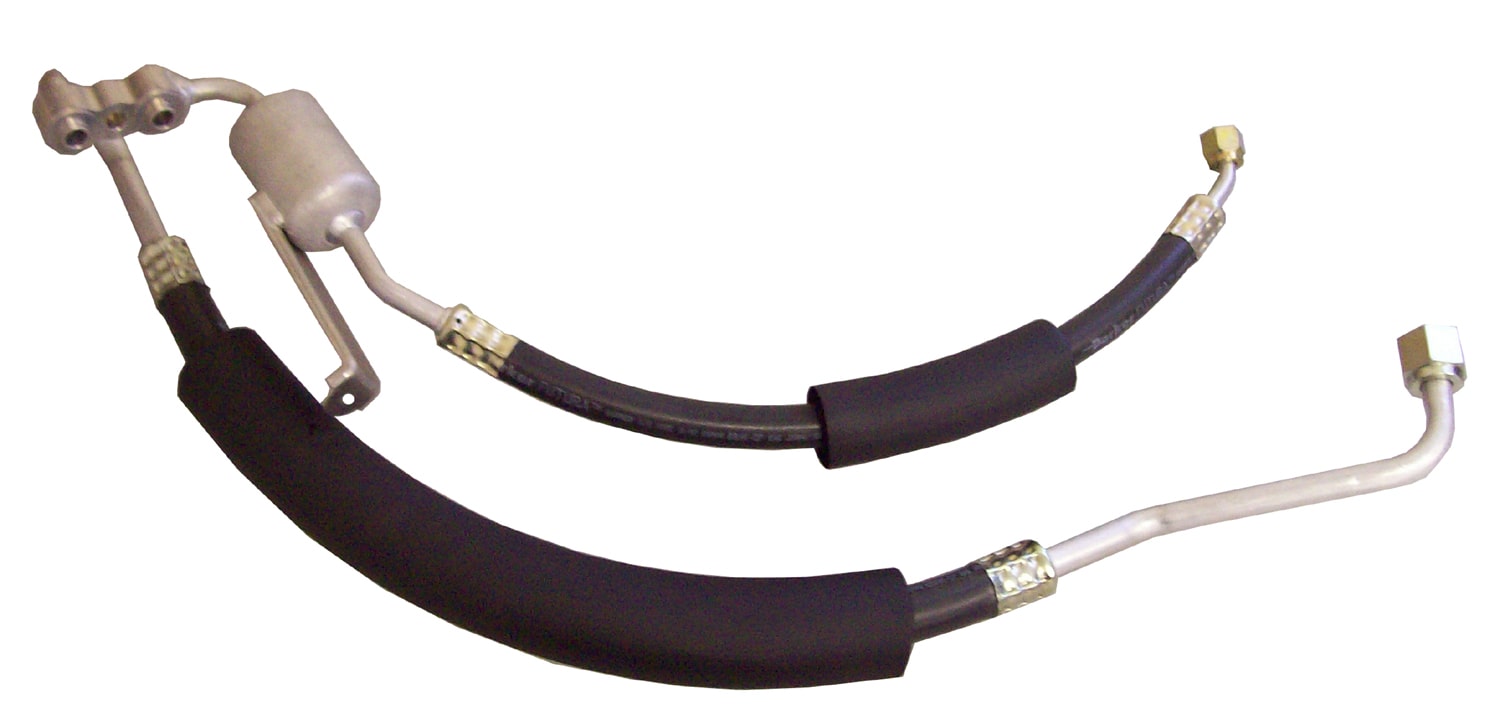
A/C Hose Assembly
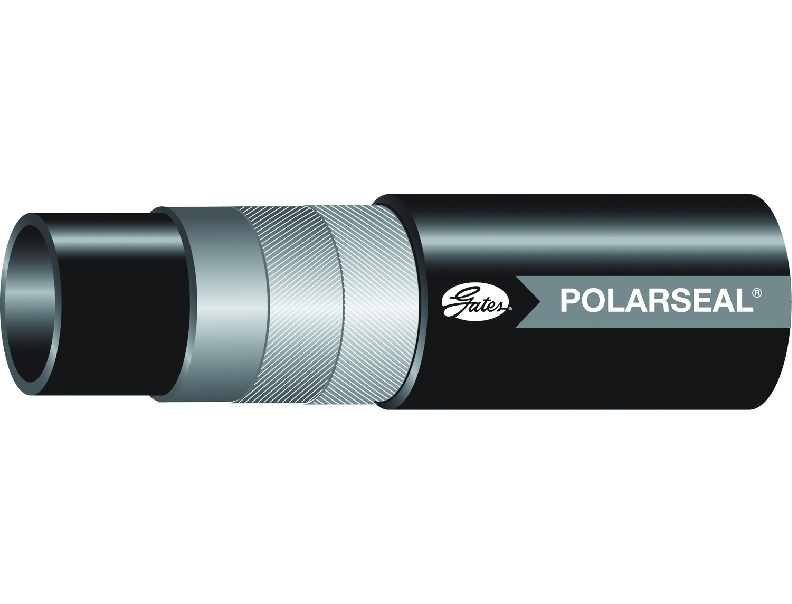
Barrier A/C hose
Send Us a Message today!
Have any question Ask Us?
Take the first step towards exceptional service and support—fill out the form now to contact Moreland Hose and let us meet all your needs with expertise and efficiency!

Flowing Excellence, Delivering Reliability.
- Hydraulic Hose
- Industrial Hose
- Hydraulic Fittings
- Industrial Fittings
- Hydraulic Quick Disconnects
- Pneumatic Quick Disconnects
- More Products
- A . 135 Adams Ave, Hempstead, NY 11550
- P . 516-485-9898
- E. [email protected]
- A . 4118 Sunrise Hwy, Oakdale, NY 11769
- P . 631-563-7071
- E. [email protected]
© 2024 Moreland Hose . All rights reserved.
- Privacy Policy
- Share full article
Advertisement
Supported by
A Boat Designed to Be a Breath of Fresh Air
The creators of the latest vessel from Azimut Yachts went to great lengths to reduce its emissions, but even they won’t call it green.

By Ian Volner
Reporting from Milan
This article is part of our Design special section about water as a source of creativity.
In the middle of Milan Design Week last month, in the middle of the Bagni Misteriosi — a historic bathing complex in the Porta Romana neighborhood — the Italian luxury shipbuilder Azimut Yachts hosted an unusual exhibition. It was a celebration of the company’s latest offering: the Seadeck 6, which made its debut last year and features interiors by the design team of Matteo Thun and Antonio Rodriguez.
Having been lowered into the facility by crane, the nearly 60-foot vessel was set afloat in an outdoor swimming pool. There it bobbed, traversed by hordes of well-coiffed guests while a concealed apparatus shrouded it in bursts of atmospheric steam. Surreal, elegant, not a little absurd, it was a scene straight out of Fellini, with overtones of Werner Herzog’s boat-hoisting epic “Fitzcarraldo.”
But the thing that made it most unusual? “Azimut wanted to make this the most sustainable boat on the market,” Mr. Rodriguez said. “We tried to do that.”
The ultimate playthings for the ultrawealthy, high-end pleasure craft would not seem optimal candidates for greening. Yet a growing number of manufacturers and designers are trying to change that, producing yachts both large and (comparatively) small assembled from fewer and less carbon-intensive materials, requiring a fraction of the power to run and drawing more of their energy from renewable sources.
In a peculiar twist for an industry uniquely exposed to supply-chain shocks and the vicissitudes of geopolitics (the loss of the once-lucrative Russian market continues to smart), global brand leaders appear to be making the move toward energy efficiency of their own accord, rather than in response to any explicit demand from their clientele.
“We will have to see if the world is ready,” said Giovanna Vitelli, Azimut’s chairwoman, as she stood aboard the Seadeck 6 during its not-quite maiden, not-quite voyage.
It is an approach that entails some risk. In January, Silent Yachts — an Austrian solar-electric catamaran company with facilities in Fano, Italy — was reported to be approaching bankruptcy amid problems with both its corporate parent and a key subcontractor. A former client stepped in to rescue the brand from insolvency, yet challenges remain. In a recent interview with the trade publication Superyacht News, the company’s new chief operating officer, Fabrizio Iarrera, spoke of the “costs associated with creating an entirely new market.”
Still, the push toward more sustainable yachting appears to be barreling forward, part of a broader shift in the role of design in the industry. Seven years ago, Bonetti/Kozerski Architecture in New York — known for its plush hotel interiors for the hospitality magnate Ian Schrager — was invited by Azimut’s sister company Benetti to develop a new yacht concept, the Oasis. It was one of the rare instances in which Benetti, founded in 1873, had sought out collaborators with no previous maritime experience, and all parties took it as an opportunity to import a set of values they viewed as lacking in the boating world.
According to Enrico Bonetti, the architecture firm’s co-founder, boat design previously favored grand spaces that no one actually liked. “There’s always this big table nobody’s using, then you step into another place with shiny things,” he said. “We didn’t follow that.” With its open, airy living space, wood paneling and notable lack of gold leaf, the Oasis represented a more humane vision for the yacht of the future, one constrained by at least the appearance of refinement and reserve, though it was ritzy nonetheless.
That low-key tendency is very much in line with the decarbonization campaign now underway at Azimut and other builders. In recent years, design studios like Zaha Hadid Architects and Pininfarina have turned out yacht proposals that pair sleek visuals with reduced reliance on fossil fuels; later this year, Yves Béhar, the Swiss-born product and furniture maestro, will unveil his own take on the trend — a catamaran designed for an as-yet unnamed manufacturer. “It’s essentially an E.V.,” said Mr. Béhar, who was also in Milan for the design fair.
Underlying the designer eco-yacht phenomenon is the intuitive sense, as Antonio Rodriguez put it, that “silent luxury” is fast displacing opulence. Where previous generations of yachters sought to flaunt their wealth, today’s owners may be less keen to draw attention to their own affluence. In reducing their carbon footprint, boatmakers are hoping to lure customers eager to reduce their profile, while still allowing them to ply the seven seas in style.
The Seadeck 6 certainly does that. With a crisp, white exterior — the work of the veteran yacht designer Alberto Mancini — the ship sleeps up to eight in three below-deck cabins. Topside, guests can sprawl in fore and aft lounges, or take lunch prepared in a semi-concealed galley, served on an elegant foldout table. The interior palette is muted, the contours soft, and everywhere, Ms. Vitelli said, the intention was to let people “feel close to water” rather than immuring them in an oceangoing penthouse.
Relatively speaking, the Seadeck’s ecological credentials are also impressive. Nearly every feature has been retooled for minimal environmental impact: replacing the customary teak deck with sustainably sourced cork; covering the walls and upholstering the seating with organic and recycled materials; even sealing the hull with something the company refers to as an ‘eco-gel finish.’” Most important, the craft incorporates a still-novel (for marine propulsion) hybrid engine, capable of a top speed of 33 knots with the ability to navigate about 200 miles offshore — enough for a quick spin from Fort Lauderdale to the Bahamas.
Add it together, and the company claims the Seadeck 6 and its larger cousin, the 71-foot Seadeck 7, achieve an operational carbon output 60 percent that of comparable vessels.
It’s a start, but only that. A comparative analysis with a similarly sized Azimut product — coupled with statistics from the Environmental Protection Agency — suggests that the cruise from Fort Lauderdale to Nassau would contribute roughly 4,400 pounds of carbon dioxide on the Seadeck 6, well over what the average American produces in a month.
And then there are the more immediate costs: around $2.8 million for the Seadeck 6 and $4.25 million for the Seadeck 7. Ms. Vitelli said the company hopes that enough buyers will come aboard to make price reductions possible in future.
A lot is riding on these hopes. Elsewhere in Milan, at the giant exhibition hall of the Salone del Mobile furniture fair, a talk session with a group of yacht experts underscored the stakes: During the panel, Stefano de Vivo, the chief commercial officer of the luxury yacht brand Ferretti Group, presented a slide showing Italy’s dominance in the custom-yacht sector, with domestic manufacturers taking a large share of the $9 billion global marketplace.
Mr. de Vivo declared sustainability essential to shipbuilding’s ongoing success and spoke of a general convergence with the design field at large. “As a shipyard, we’ve had to become less ‘marine,’” he said.
Back at the Bagni Misteriosi, mariners did seem in somewhat short supply, as various design lovers and Salone personalities (including the celebrated architect Michele de Lucchi, who helped create an on-site installation for Azimut) swanned around the bathhouse garden and its waterborne centerpiece. As an image of an ecologically sensitive future, the spectacle seemed off the mark — but then the Seadeck’s creators are careful not to make any overly sweeping claims as to whether their yacht, or any yacht for that matter, can truly be deemed an ecological asset.
“We don’t really like the word ‘sustainable,’” Mr. Rodriguez said. “We prefer to say it’s ‘conscious.’”

IMAGES
VIDEO
COMMENTS
Find self-contained, split gas and chiller marine air conditioners from top brands like CTM, Webasto, Mermaid Air and Flagship. Learn how to choose the right capacity, installation and features for your boat or yacht.
1. Self-Contained Units. Self contained marine air conditioners like the Webasto and Marinaire place the condenser and blower in a single package. Most marine air conditioners rely on seawater to cool the returning refrigerant. These units are very efficient, quiet, and compact, which is perfect for a boat.
Find the best marine air conditioner for your boat from Dometic, a leading brand with high-quality and energy-efficient products. Compare models, features, capacities, and prices of self-contained, split, and chilled water systems.
plumbing & ventilation. marine ventilation. marine air conditioners. CONTACT WEST MARINE. Live Chat. 1-800-262-8464. Store Locator. Shop boat air conditioners at West Marine including fixed mount AC units, installation kits, filters, pumps and more. Get free shipping to home or in-store!
Air conditioning opens these locations to comfortable boating. Air Conditioning. Self-contained air conditioning units like the FCF Series air conditioners are typically the best choice for boats up to 40'. All of the major components are mounted on a single chassis, which is installed in the living area under a bunk or settee, or in a locker.
Compare nine of the best marine air conditioner units for different boat sizes and needs. Learn about their features, pros, cons, and prices from personal experience and user reviews.
Learn how to choose the best air conditioner for your sailboat based on size, power, noise, and budget. Compare five top-rated AC units with features, pros, and cons.
Learn about different types of yacht air conditioning systems, their features, benefits and maintenance tips. Compare centralized, self-contained, chilled water, reverse cycle and ductless split systems for your yacht.
Aqua Air is the original innovator of marine chilled water air conditioning for yachts of all sizes. It offers high-quality engineering, design, and manufacturing of titanium components for mega yachts and superyachts.
This 16,500 BTU marine air conditioner provides excellent climate control to vessels, with a cooling capacity of 1,400 cubic feet, designed to cool/heat up to a 40′ cruiser or 45′ sailboat. Every unit is constructed of quality components assembled on high-grade, solid stainless steel bases, right here in the US, and is available in right ...
Dometic air conditioner's dominance of the marine ac market is the result of more than 60 years of experience building units in America under the Cruisair and Marine Air brands. As a result, Dometic is the preferred marine air conditioning brand of almost all boat and yacht builders worldwide and counts with the world's largest certified ...
CTM-Marine offers a range of marine air conditioners for different types and sizes of vessels, from self-contained to chiller systems. Learn more about the features, benefits and applications of each system and find the best solution for your boat.
MSBA Integra, 16000 Btu Self Contained Marine Air Conditioner Now with Titanium Coil. The Integra is a revolutionary product of MarinAire®. It bears multiple features and innovations that have yet to be introduced in the markets. One such advantage includes a built-in pressure gauge.
Marine air conditioning is a highly specialized area, in which Daikin is ideally placed to offer a dedicated service. Daikin provides innovative marine climate control solutions and support services to meet the needs of ship yards, ship owners and ship suppliers, via an extensive network of marine HVAC contractors and installation engineers.
The key to keeping your air conditioner operating reliably is regular maintenance. The first place to look for recommended maintenance is your owner's manual, but here are a few general tips that can be used to help maintain most any AC system. 1. Monitor the water flow. Marine air conditioners work by exchanging heat with circulating seawater.
Its recent technologies and novelty in Marine, Boat and Yacht air conditioning and heating systems provide the highest technologies and their outstanding value in the market. MarinAire as a leading manufacturer, offers the best comfort with lowest cost to customers. Newly Designed MSBA series Marine air conditioners are the quietest units ever ...
For the average marine air conditioner, you have to install a through hull and seacock for the cooling water, pump, condenser, ducting, grills, thermostat, condensation drain to the bilge, and another exit above the waterline for the water outlet. All of this should take approx. 20 hours at $90-$100/hr yard rate.
Webasto FCF Classic 12,000 BTU Marine Air Conditioner - 230V. FCF0012023G. In Stock: 10. Reg Price: $1,971.75. CPlus Price: Login for Pricing. Add to cart. Webasto FCF Classic 16,000 BTU Marine Air Conditioner - 115V. FCF0016000GS.
Call Now 1-800-316-6426. #1 Marine air conditioner and marine pump supply manufacture in the USA since 1995. AC compressors and everything you need to chill your boat.
Marine air conditioners and recreational vehicles equipment. Products. Where To Buy. Support. About Us. Contact Us. Dealer Log In. MARINE AIR CONDITIONERS FOR THE MODERN SAILOR COOL OFF National Marine Manufacturers association Proud Member Of: Marine Air Conditioners. Available from 6,000 to 72,000 BTU/h.
Self-Contained Marine Air Conditioners are the perfect solution for boats with one to three cabins. Self contained units contain the compressor, condenser, and evaporator all in one unit. Every cabin is equipped with its own self-contained unit which is spec'd according to the cabin size, as well as the cooling and / or heating requirements of that cabin.
With our cutting-edge technologies, superior materials, and dependable customer support, Flow Marine Systems has captured the market with groundbreaking designs, trusted by boaters worldwide. We are committed to delivering top-of-the-line marine air conditioning & refrigeration systems that meet and exceed the unique requirements of your vessel.
At Moreland Hose, we understand the essential role that A/C hoses play in the efficiency and longevity of your air conditioning systems. Recognizing that these are critical wear-components, we offer customized A/C hose fabrication services tailored to your specific needs - while you wait! ... Marine; More Products; Hempstead. A. 135 Adams Ave ...
The creators of the latest vessel from Azimut Yachts went to great lengths to reduce its emissions, but even they won't call it green. The Seadeck 6 by Azimut Yachts on display at the Bagni ...